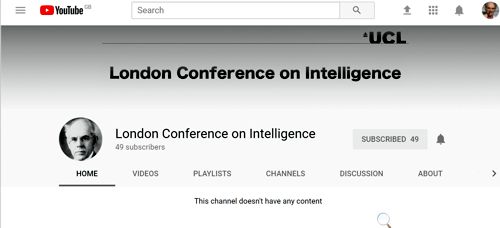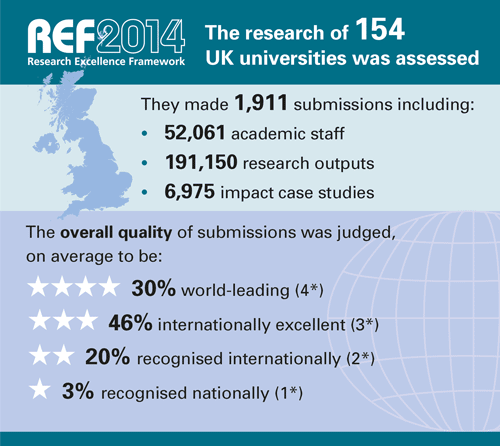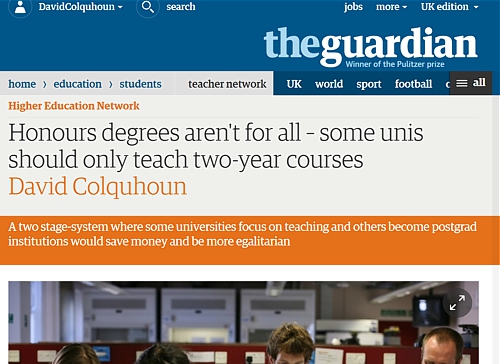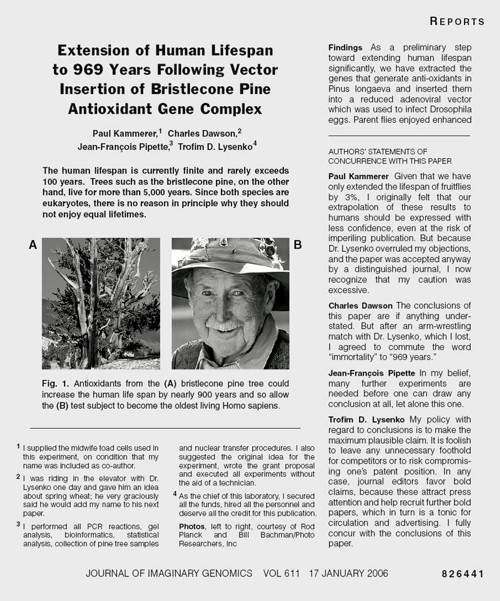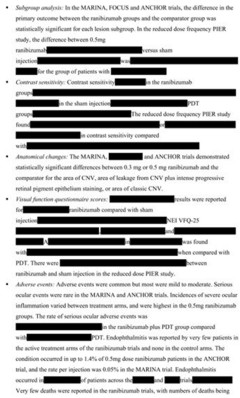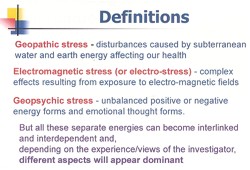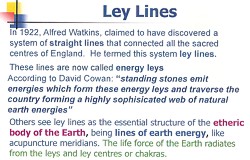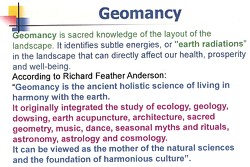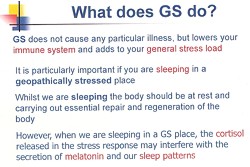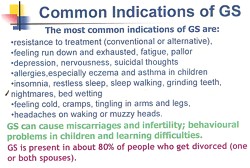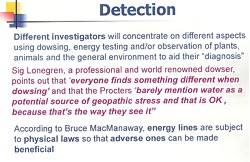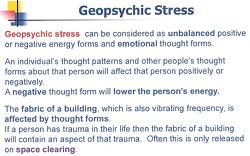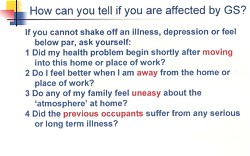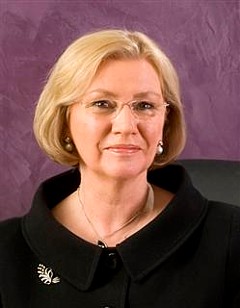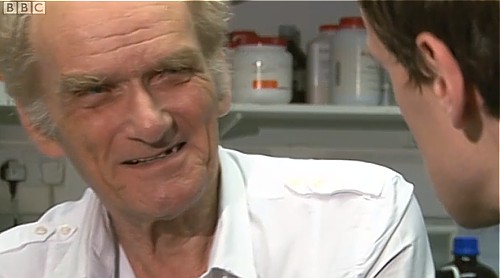Universities
See also The history of eugenics at UCL: the inquiry report.
On Monday evening (8th January 2018), I got an email from Ben van der Merwe, a UCL student who works as a reporter for the student newspaper, London Student. He said
“Our investigation has found a ring of academic psychologists associated with Richard Lynn’s journal Mankind Quarterly to be holding annual conferences at UCL. This includes the UCL psychologist professor James Thompson”.
He asked me for comment about the “London Conference on Intelligence”. His piece came out on Wednesday 10th January. It was a superb piece of investigative journalism. On the same day, Private Eye published a report on the same topic.
I had never heard about this conference, but it quickly became apparent that it was a forum for old-fashioned eugenicists of the worst kind. Perhaps it isn’t surprising that neither I, nor anyone else at UCL that I’ve spoken to had heard of these conferences because they were surrounded by secrecy. According to the Private Eye report:
“Attendees were only told the venue at the last minute and asked not to share the information”
The conference appears to have been held at least twice before. The programmes for the 2015 conference [download pdf] and the 2016 conference [download pdf] are now available, but weren’t public at the time. They have the official UCL logo across the top despite the fact that Thompson has been only an honorary lecturer since 2007.
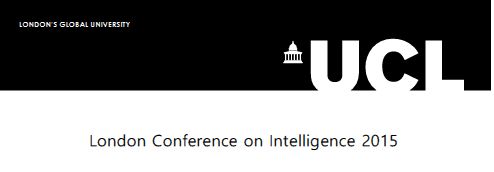
A room was booked for the conference through UCL’s external room booking service. The abstracts are written in the style of a regular conference. It’s possible that someone with no knowledge of genetics (as is likely to be the case for room-booking staff) might have not spotted the problem.
The huge problems are illustrated by the London Student piece, which identifies many close connections between conference speakers and far-right, and neo-nazi hate groups.
“[James Thompson’s] political leanings are betrayed by his public Twitter account, where he follows prominent white supremacists including Richard Spencer (who follows him back), Virginia Dare, American Renaissance, Brett Stevens, the Traditional Britain Group, Charles Murray and Jared Taylor.”
“Thompson is a frequent contributor to the Unz Review, which has been described as “a mix of far-right and far-left anti-Semitic crackpottery,” and features articles such as ‘America’s Jews are Driving America’s Wars’ and ‘What to do with Latinos?’.
His own articles include frequent defences of the idea that women are innately less intelligent than men (1, 2, 3,and 4), and an analysis of the racial wage gap which concludes that “some ethnicities contribute relatively little,” namely “blacks.”
“By far the most disturbing of part of Kirkegaard’s internet presence, however, is a blog-post in which he justifies child rape. He states that a ‘compromise’ with paedophiles could be:
“having sex with a sleeping child without them knowing it (so, using sleeping medicine. If they don’t notice it is difficult to see how they cud be harmed, even if it is rape. One must distinguish between rape becus the other was disconsenting (wanting to not have sex), and rape becus the other is not consenting, but not disconsenting either.”
The UCL Students’ Union paper, Cheesegrater, lists some of James Thompson’s tweets,including some about brain size in women.
Dr Alice Lee
It’s interesting that these came to light on the same day that I learned that the first person to show that there was NO correlation between brain size and intelligence was Dr Alice Lee, in 1901: A First Study of the Correlation of the Human Skull. Phil. Trans. Roy. Soc A https://doi.org/10.1098/rsta.1901.0005 [download pdf].
 Alice Lee published quite a lot, much of it with Pearson. In 1903, for example, On the correlation of the mental and physical characters in man. Part II Alice Lee, Marie A. Lewenz and Karl Pearson https://doi.org/10.1098/rspl.1902.0070 [download pdf]. She shows herself to be quite feisty in this paper -she says of a paper with conclusions that differs from hers
Alice Lee published quite a lot, much of it with Pearson. In 1903, for example, On the correlation of the mental and physical characters in man. Part II Alice Lee, Marie A. Lewenz and Karl Pearson https://doi.org/10.1098/rspl.1902.0070 [download pdf]. She shows herself to be quite feisty in this paper -she says of a paper with conclusions that differs from hers
“Frankly, we consider that the memoir is a good illustration of how little can be safely argued from meagre data and a defective statistical theory.”
She also published a purely mathematical paper, “On the Distribution of the Correlation Coefficient in Small Samples”, H. E. Soper, A. W. Young, B. M. Cave, A. Lee and K. Pearson, Biometrika, 11, 1917, pp. 328-413 (91 pages) [download pdf]. There is interesting comment on this paper in encyclopedia.com.
Alice Lee was the first woman to get a PhD in mathematics from UCL and she was working in the Galton laboratory, under Karl Pearson. Pearson was a great statistician but also an extreme eugenicist. It was good to learn that he supported women in science at a time when that was almost unknown. The Dictionary of National Biography says
“He considered himself a supporter of equal rights and opportunities for women (later in his capacity as a laboratory director he hired many female assistants), yet he also expressed a willingness to subordinate these ideals to the greater good of the race.”
But it must never be forgotten that Karl Pearson said, in 1934,
” . . . that lies rather in the future, perhaps with Reichskanzler Hitler and his proposals to regenerate the German people. In Germany a vast experiment is in hand, and some of you may live to see its results. If it fails it will not be for want of enthusiasm, but rather because the Germans are only just starting the study of mathematical statistics in the modern sense!”
And if you think that’s bad, remember that Ronald Fisher, after World War 2, said, in 1948,
“I have no doubt also that the [Nazi] Party sincerely wished to benefit the German racial stock, especially by the elimination of manifest defectives,
such as those deficient mentally, and I do not doubt that von Verschuer gave, as I should have done, his support to such a movement.”
For the context of this comment, see Weiss (2010).
That’s sufficient reason for the removal of their names from buildings at UCL.
What’s been done so far?
After I’d warned UCL of the impending scandal, they had time to do some preliminary investigation. An official UCL announcement appeared on the same day (10 Jan, 2018) as the articles were published.
“Our records indicate the university was not informed in advance about the speakers and content of the conference series, as it should have been for the event to be allowed to go ahead”
“We are an institution that is committed to free speech but also to combatting racism and sexism in all forms.”
“We have suspended approval for any further conferences of this nature by the honorary lecturer and speakers pending our investigation into the case.”
That is about as good as can be expected. It remains to be seen why the true nature of the conferences was not spotted, and it remains to be seen why someone like James Thompson was an honorary senior lecturer at UCL. Watch this space.
How did it happen
Two videos that feature Thompson are easily found. One, from 2010, is on the UCLTV channel. And in March 2011, a BBC World News video featured Thompson.
But both of these videos are about his views on disaster psychology (Chilean miners, and Japanese earthquake, respectively). Neither gives any hint of his extremist political views. To discover them you’d have to delve into his twitter account (@JamesPsychol) or his writings on the unz site. It’s not surprising that they were missed.
I hope we’ll know more soon about how these meetings slipped under the radar. Until recently, they were very secret. But then six videos of talks at the 2017 meeting were posted on the web, by the organisers themselves. Perhaps they were emboldened by the presence of an apologist for neo-nazis in the White House, and by the government’s support for Toby Young, who wrote in support of eugenics. The swing towards far-right views in the UK, in the USA and in Poland, Hungary and Turkey, has seen a return to public discussions of views that have been thought unspeakable since the 1930s. See, for example, this discussion of eugenics by Spectator editor Fraser Nelson with Toby Young, under the alarming heading “Eugenics is back“.
The London Conference on Intelligence channel used the UCL logo, and it was still public on 10th January. It had only 49 subscribers. By 13th January it had been taken down (apparently by its authors). But it still has a private playlist with four videos which have been viewed only 36 times (some of which were me). Before it vanished, I made a copy of Emil Kirkegard’s talk, for the record.
Freedom of speech
Incidents like this pose difficult problems, especially given UCL’s past history. Galton and Pearson supported the idea of eugenics at the beginning of the 20th century, as did George Bernard Shaw. But modern geneticists at the Galton lab have been at the forefront in showing that these early ideas were simply wrong.
UCL has, in the past, rented rooms for conferences of homeopaths. Their ideas are deluded and sometimes dangerous, but not illegal. I don’t think they should be arrested, but I’d much prefer that their conferences were not at UCL.
A more serious case occurred on 26 February 2008. The student Islamic Society invited representatives of the radical Islamic creationist, Adnan Oktar, to speak at UCL. They were crowing that the talk would be held in the Darwin lecture theatre (built in the place formerly occupied by Charles Darwin’s house on Gower Street). In the end, the talk was allowed to go ahead, but it was moved by the then provost to the Gustave Tuck lecture theatre, which is much smaller, and which was built from a donation by the former president of the Jewish Historical Society. See more accounts here, here and here. It isn’t known what was said, so there is no way to tell whether it was illegal, or just batty.
It is very hard to draw the line between hate talk and freedom of speech. There was probably nothing illegal about what was said at the Intelligence Conferences. It was just bad science, used to promote deeply distasteful ideas..
Although, in principle, renting a room doesn’t imply any endorsement, in practice all crackpot organisations love to use the name of UCL to promote their cause. That alone is sufficient reason to tell these people to find somewhere else to promote their ideas.
Follow up in the media
For a day or two the media were full of the story. It was reported, for example, in the Guardian and in the Jewish Chronicle,
On 11th January I was asked to talk about the conference on BBC World Service. The interview can be heard here.
The real story
Recently some peope have demanded that the names of Galton and Pearson should be expunged from UCL.
There would be a case for that if their 19th century ideas were still celebrated, just as there is a case for removing statues that celebrate confederate generals in the southern USA. Their ideas about measurement and statistics are justly celebrated. But their ideas about eugenics are not celebrated.
On the contrary, it is modern genetics, done in part by people in the Galton lab, that has shown the wrongness of 19th century views on race. If you want to know the current views of the Galton lab, try these. They could not be further from Thompson’s secretive pseudoscience.
Steve Jones’ 2015 lecture “Nature, nurture or neither: the view from the genes”,
Or check the writing of UCL alumnus, Adam Rutherford: “Why race is not a thing, according to genetics”,
or, from Rutherford’s 2017 article
“We’ve known for many years that genetics has profoundly undermined the concept of race”
“more and more these days, racists and neo-Nazis are turning to consumer genetics to attempt to prove their racial purity and superiority. They fail, and will always fail, because no one is pure anything.”
“the science that Galton founded in order to demonstrate racial hierarchies had done precisely the opposite”
Or read this terrific account of current views by Jacob A Tennessen “Consider the armadillos“.
These are accounts of what geneticists now think. Science has shown that views expressed at the London Intelligence Conference are those of a very small lunatic fringe of pseudo-scientists. But they are already being exploited by far-right politicians.
It would not be safe to ignore them.
Follow-up
15 January 2018. The involvement of Toby Young
The day after this was posted, my attention was drawn to a 2018 article by the notorious Toby Young. In it he confirms the secretiveness of the conference organisers.
“I discovered just how cautious scholars in this field can be when I was invited to attend a two-day conference on intelligence at University College London by the academic and journalist James Thompson earlier this year. Attendees were only told the venue at the last minute – an anonymous antechamber at the end of a long corridor called ‘Lecture
Room 22’ – and asked not to share the information with anyone else.”
More importantly, it shows that Toby Young has failed utterly to grasp the science.
“You really have to be pretty stubborn to dispute that general cognitive ability is at least partly genetically based.”
There is nobody who denies this.
The point is that the interaction of nature and nurture is far more subtle than Young believes, and that makes attempts to separate them quantitatively futile. He really should educate himself by looking at the accounts listed above (The real story)
16 January 2018. How UCL has faced its history
Before the current row about the “London Intelligence Conference”, UCL has faced up frankly to its role in the development of eugenics. It started at the height of Empire, in the 19th century and continued into the early part of the 20th century. The word “eugenics” has not been used at UCL since it fell into the gravest disrepute in the 1930s, and has never been used since WW2. Not, that is, until Robert Thompson and Toby Young brought it back. The history has been related by curator and science historian, Subhadra Das. You can read about it, and listen to episodes of her podcast, at “Bricks + Mortals, A history of eugenics told through buildings“. Or you can listen to her whole podcast.
Although Subhadra Das describes Galton as the Victorian scientist that you’ve never heard of. I was certainly well aware of his ideas before I first came to UCL (in 1964). But at that time. I thought of Karl Pearson only as a statistician, and I doubt if I’d even heard of Flinders Petrie. Learning about their roles was a revelation.
17 January 2018.
Prof Semir Zeki has been pointed out to me that it’s not strictly to say “the word “eugenics” has not been used at UCL since it fell into the gravest disrepute in the 1930s”. It’s true to say that nobody advocated it but the chair of Eugenics was not renamed the chair of Human Genetics until 1963. This certainly didn’t imply approval. Zeki tells me that it’s holder “Lionel Penrose, when he mentioned his distaste for the title, saying that it was a hangover from the past, and should be changed”.
DOI: 10.15200/winn.142809.94999
The Research Excellence Framework (REF) is the latest in a series of 6-yearly attempts to assess the quality of research in UK universities. It’s used to decide how to allocate about £1.6 billion per year of taxpayers’ money, the so-called "quality-related" (QR) allocation.
It could have been done a lot worse. One of the best ideas was that only four papers could be submitted, whatever the size of a research group. After much argument, the judgment panels were told not to use journal impact factors as a proxy for quality (or, for lack of quality), though it’s clear that many people did not believe that this would be obeyed, But it cost at least £60 million. At UCL alone, it took 50 – 75 person-years of work. and the papers that were submitted were assessed by people who often would have no deep knowledge about the field, It was a shocking waste of time and money, and its judgements in the end were much the same as last time.
Did the REF benefit science?
It’s frequently said that the REF improved the UK’s science output. The people who claim this need a course in the critical assessment of evidence. Firstly, there is no reason to think that science has improved in quality in the last 6 years, and secondly any changes that might have occurred are hopelessly confounded with the passage of time, the richest source of false correlations.
I’d argue that the REF has harmed science by encouraging the perverse incentives that have done so much to corrupt academia. The REF, and all the other university rankings produced by journalists, are taken far too seriously by vice-chancellors and that does active harm. As one academic put it
"This isn’t about science – it’s about bragging rights, or institutional willy-waving. "
There are now serious worries about lack of reproducibility of published work, waste of money spent on unreliable studies, publication of too many small under-powered studies, bad statistical practice (like ignoring the false discovery rate), and about exaggerated claims by journals, university PR people and authors themselves. These result in no small part from the culture of metrics and the mismeasurement of science. The REF has added to the pressures.
It is highly unsatisfactory, so the only real question becomes what should be done instead?
What’s to be done?
Transferring all the QR money to Research Councils won’t work. It would merely encourage the grossly bad behaviour that we’ve seen at Imperial College London, Warwick University, Kings College London and Queen Mary College London, all of whom have fired successful senior staff simple because their grant income wasn’t deemed big enough. (This is odd because the same managers whine continually that they make a loss on research grants, but that’s another question.) It’s been suggested that this could be avoided by reducing considerably the overheads that come with grants, but this would leave a shortfall that, without QR, would be impossible to make up.
At present a HEFCE working group is considering the possibility that metrics might be used in the next REF. It’s a sensible group of people, and they are well aware of the corrupting influence of metrics, and the lack of evidence that they measure the quality of research. So if reading papers takes too much time and money, and metrics are likely to lead to widespread "gaming" (a euphemism for cheating), what should be done?
I made a suggestion in 2010, but it seems to have been totally ignored, despite appearing in the Times (in their premier
Thunderer opinion column. So I’ll try to make the case again, in the context of the REF.
A complete re-thinking of tertiary education is needed,
Proposal for a two stage higher education system
It seems to be a good thing that such a large proportion of the population now get higher education. But the university system has failed to change to cope with the huge increase in the number of students.
The system of highly specialist honours degrees might have been adequate when 5% of the population did degrees, but that system seems quite inappropriate when 50% are doing them.
There are barely enough university teachers who are qualified to teach specialist 3rd year or postgraduate courses. And many teachers must have suffered from (in my field) trying to teach the subtleties of the exponential probability density function to a huge third year class, most of whom have already decided that they want to be bankers or estate agents.
These considerations have driven me to conclude, somewhat reluctantly, that the whole system needs to be altered.
Honours degrees were intended as a prelude to research and 50% of the population are not going to do research (fortunately for the economy). Vice-chancellors have insisted on imposing on large numbers of undergraduates, highly specialist degrees which are not what they want or need.
I believe that all first degrees should be ordinary degrees, and these should be less specialist than now. Some institutions would specialise in teaching such degrees, others would become predominantly postgraduate institutions, which would have the time. money and expertise to do proper advanced teaching, rather than the advanced Powerpoint courses that dominate what passes for Graduate Schools in the UK.
There would, of course, be almighty rows about which universities would be re-allocated to teach ordinary degrees. That’s not a reason to educate students in 2015 using a pre-war system.
The two-stage system would be more egalitarian than the present one
I anticipate that some people might think that this system is a reversion to the pre-1992 divide between polytechnics and universities. It isn’t. The pre-1992 system labelled you as either polytechnic or university: it was a two-tier system. I’m proposing a two stage system. The two sorts of institution work in series, not in parallel.
Such a system would be more egalitarian than now, not less.
Everyone would start out with the same broad undergraduate education, and the decision about whether to specialise, and the area in which to specialise, would not have to be made before leaving (high) school, as now, but would be postponed until two or three years later. That’s a lot better, especially for people from poorer backgrounds.
If this were done, most research would be done in the postgraduate institutions. Of course there are some good researchers in institutions that would become essentially teaching-only, so there would have to be chances for such people to move to postgraduate universities, and for some people to move in the other direction.
This procedure would, no doubt, result in a reduction in the huge number of papers that are published (but read by nobody). That is another advantage of my proposal. It’s commonly believed that there is a large amount of research that is either trivial or wrong. In biomedical research, it’s been estimated that 85% of resources are wasted (Macleod et al., 2014).
It’s well-known that any paper, however bad, can be published in a peer-reviewed journal. Pubmed, amazingly, indexes something like 30 jouranls devoted to quack medicine, in which papers by quacks are peer-reviewed by other quacks, and which are then solemnly counted by bean-counters as though they were real research. The pressure to publish when you have nothing to say is one of the perverse incentives of the metrics culture.
It seems likely that standards of research in second-stage universities would be at least as high as at present. It that’s the case then QR could simply be allocated on the basis of the number of people in a department. Dorothy Bishop has shown that even under the present system, the amount of QR money received is strongly correlated with the size of the department (correlation coefficient = 0.995 for psychology/neuroscience).
From Dorothy Bishop’s blog. r = 0.995
Using metrics produces only a tiny increase in the correlation coefficient for RAE data. It could hardly be any higher than 0.995
In other words, after all the huge amount of time, effort and money that’s been put into assessment of research, every submitted researcher ends up getting much the same amount of money.
That system wouldn’t work at the moment, because, sadly, universities would, no doubt, submit the departmental cat for a share of the cash. But it could work under a system such as I’ve described. The allocation of QR would take microseconds and cost nothing.
How much would the two-stage system cost?
To have any hope of being accepted by politicians, the two-stage system would probably have to cost no more than the existing system. As far as I know. nobody seems to have made any serious attempt to work out the costs. Perhaps they should. It won’t be easy because an important element of the two-stage system is to improve postgraduate education, and postgraduate education was forgotten in the government’s "reforms"
Much would depend on whether the first stage, ordinary degrees could be taught in two years. In an institution that does little research, there would be no justification for the long summer vacation. Something comparable with (high) school holidays would be more appropriate, and if a decent job could be done in two years, that could save enough money to pay for the rest. It would also mimimise the debt that hangs round the neck of graduates.
The cost of running the second stage would depend on how many students opted (and qualified) to carry on to do an honours degree, and on how many of those wanted go on to graduate school and higher degrees. The numbers of people that went on to specialist honours degrees would inevitably be smaller than now, so their education would be cheaper. But, crucially, they could be educated better. And because of the specialist researchers in a postgraduate institution, it would be possible to have real postgraduate education in advanced research methods,
At present, Graduate Schools in the UK (unlike those in the USA) rarely teach topics beyond advanced Powerpoint, and that’s a recipe for later mediocrity.
In order to estimate the actual cost, we’d need to know how many people wanted to go beyond the first degree (and qualified to do so). If this were not to large, the proposed system could well be cheaper than the presnet one, as well as being more egalitarian, and providing better postgraduate education. The Treasury should like that.
The California System
It will not have escaped the readers’ attention that the two stage system proposed here has much in common with higher education in the USA. In particular, it resembles the University of California system, which was started in 1960. It became a model for the rest of the world.
Meanwhile, the UK persists with a pre-war system of specialist honours degrees that is essentially unchanged since only a handful of people went to universities.
It’s time for the UK to have a serious debate about whether we need to change.
Follow-up
I just noticed this, from the inimitable Laurie Taylor. It is dated 4 July 2013. Who says the REF does not encourage cheating?
AppointmentsAre you a distinguished academic researcher looking to supplement your income? Then look no further. Poppleton is offering 24 extraordinarily well-paid and extraordinarily part-time posts to leading scholars in almost any discipline who will help to raise its profile in the research excellence framework. These posts will follow what is known as the Cardiff-Swansea paradigm in that successful candidates need not have conducted any of their distinguished research at Poppleton, have no need to ever visit the actual campus, and can be assured that their part-time contracts will expire immediately after the date of the REF census. Please apply marking your application “REF FARCE”. |
3 February 2015
The day after this post appeared the Guardian published a version of it which discussed only the two-stage degree proposals but omits the bit about the Research Excellence Framework (REF 2014). The title was "Honours degrees aren’t for all – some unis should only teach two-year courses". There are a lot more comments there than than here.. I assume that the headline was written by one of those pesky subeditors who failed to understand what’s important (the two year degrees were just a suggestion, nothing to do with the main proposals).
3 April 2015
As an experiment, this blog has been re-posted on the Winnower. The advantage of this is that it now has a digital object identifier, DOI: 10.15200/winn.142809.94999
[This an update of a 2006 post on my old blog]
The New York Times (17 January 2006) published a beautiful spoof that illustrates only too clearly some of the bad practices that have developed in real science (as well as in quackery). It shows that competition, when taken to excess, leads to dishonesty.
More to the point, it shows that the public is well aware of the dishonesty that has resulted from the publish or perish culture, which has been inflicted on science by numbskull senior administrators (many of them scientists, or at least ex-scientists). Part of the blame must attach to "bibliometricians" who have armed administrators with simple-minded tools the usefulness is entirely unverified. Bibliometricians are truly the quacks of academia. They care little about evidence as long as they can sell the product.
The spoof also illustrates the folly of allowing the hegemony of a handful of glamour journals to hold scientists in thrall. This self-inflicted wound adds to the pressure to produce trendy novelties rather than solid long term work.
It also shows the only-too-frequent failure of peer review to detect problems.
The future lies on publication on the web, with post-publication peer review. It has been shown by sites like PubPeer that anonymous post-publication review can work very well indeed. This would be far cheaper, and a good deal better than the present extortion practised on universities by publishers. All it needs is for a few more eminent people like mathematician Tim Gowers to speak out (see Elsevier – my part in its downfall).
Recent Nobel-prizewinner Randy Schekman has helped with his recent declaration that "his lab will no longer send papers to Nature, Cell and Science as they distort scientific process"
The spoof is based on the fraudulent papers by Korean cloner, Woo Suk Hwang, which were published in Science, in 2005. As well as the original fraud, this sad episode exposed the practice of ‘guest authorship’, putting your name on a paper when you have done little or no work, and cannot vouch for the results. The last (‘senior’) author on the 2005 paper, was Gerald Schatten, Director of the Pittsburgh Development Center. It turns out that Schatten had not seen any of the original data and had contributed very little to the paper, beyond lobbying Scienceto accept it. A University of Pittsburgh panel declared Schatten guilty of “research misbehavior”, though he was, amazingly, exonerated of “research misconduct”. He still has his job. Click here for an interesting commentary.
The New York Times carried a mock editorial to introduce the spoof..

One Last Question: Who Did the Work? By NICHOLAS WADE In the wake of the two fraudulent articles on embryonic stem cells published in Science by the South Korean researcher Hwang Woo Suk, Donald Kennedy, the journal’s editor, said last week that he would consider adding new requirements that authors “detail their specific contributions to the research submitted,” and sign statements that they agree with the conclusions of their article. A statement of authors’ contributions has long been championed by Drummond Rennie, deputy editor of The Journal of the American Medical Association, Explicit statements about the conclusions could bring to light many reservations that individual authors would not otherwise think worth mentioning. The article shown [below] from a future issue of the Journal of imaginary Genomics, annotated in the manner required by Science‘s proposed reforms, has been released ahead of its embargo date. |
The old-fashioned typography makes it obvious that the spoof is intended to mock a paper in Science.
The problem with this spoof is its only too accurate description of what can happen at the worst end of science.
Something must be done if we are to justify the money we get and and we are to retain the confidence of the public
My suggestions are as follows
- Nature Science and Cell should become news magazines only. Their glamour value distorts science and encourages dishonesty
- All print journals are outdated. We need cheap publishing on the web, with open access and post-publication peer review. The old publishers would go the same way as the handloom weavers. Their time has past.
- Publish or perish has proved counterproductive. You’d get better science if you didn’t have any performance management at all. All that’s needed is peer review of grant applications.
- It’s better to have many small grants than fewer big ones. The ‘celebrity scientist’, running a huge group funded by many grants has not worked well. It’s led to poor mentoring and exploitation of junior scientists.
- There is a good case for limiting the number of original papers that an individual can publish per year, and/or total grant funding. Fewer but more complete papers would benefit everyone.
- Everyone should read, learn and inwardly digest Peter Lawrence’s The Mismeasurement of Science.
Follow-up
3 January 2014.
Yet another good example of hype was in the news. “Effect of Vitamin E and Memantine on Functional Decline in Alzheimer Disease“. It was published in the Journal of the American Medical Association. The study hit the newspapers on January 1st with headlines like Vitamin E may slow Alzheimer’s Disease (see the excellent analyis by Gary Schwitzer). The supplement industry was ecstatic. But the paper was behind a paywall. It’s unlikely that many of the tweeters (or journalists) had actually read it.
The trial was a well-designed randomised controlled trial that compared four treatments: placebo, vitamin E, memantine and Vitamin E + memantine.
Reading the paper gives a rather different impression from the press release. Look at the pre-specified primary outcome of the trial.
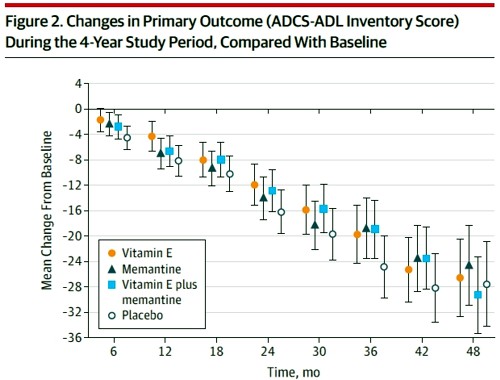
The primary outcome measure was
" . . the Alzheimer’s Disease Cooperative Study/Activities of Daily Living (ADCSADL) Inventory.12 The ADCS-ADL Inventory is designed to assess functional abilities to perform activities of daily living in Alzheimer patients with a broad range of dementia severity. The total score ranges from 0 to 78 with lower scores indicating worse function."
It looks as though any difference that might exist between the four treaments is trivial in size. In fact the mean difference between Vitamin E and placebos was only 3.15 (on a 78 point scale) with 95% confidence limits from 0.9 to 5.4. This gave a modest P = 0.03 (when properly corrected for multiple comparisons), a result that will impress only those people who regard P = 0.05 as a sort of magic number. Since the mean effect is so trivial in size that it doesn’t really matter if the effect is real anyway.
It is not mentioned in the coverage that none of the four secondary outcomes achieved even a modest P = 0.05 There was no detectable effect of Vitamin E on
- Mean annual rate of cognitive decline (Alzheimer Disease Assessment Scale–Cognitive Subscale)
- Mean annual rate of cognitive decline (Mini-Mental State Examination)
- Mean annual rate of increased symptoms
- Mean annual rate of increased caregiver time,
The only graph that appeared to show much effect was The Dependence Scale. This scale
“assesses 6 levels of functional dependence. Time to event is the time to loss of 1 dependence level (increase in dependence). We used an interval-censored model assuming a Weibull distribution because the time of the event was known only at the end of a discrete interval of time (every 6 months).”
It’s presented as a survival (Kaplan-Meier) plot. And it is this somewhat obscure secondary outcome that was used by the Journal of the American Medical Assocciation for its publicity.
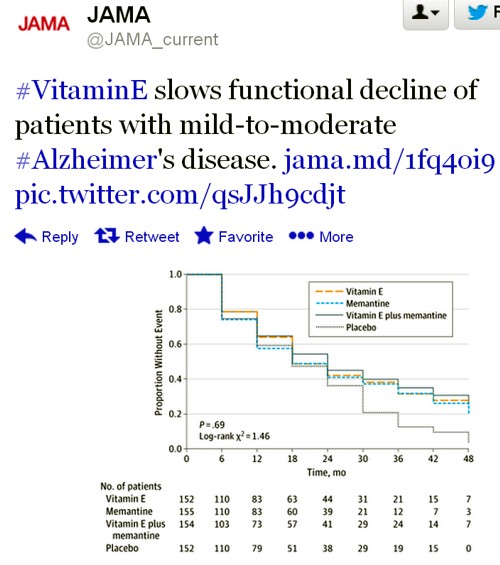
Note also that memantine + Vitamin E was indistinguishable from placebo. There are two ways to explain this: either Vitamin E has no effect, or memantine is an antagonist of Vitamin E. There are no data on the latter, but it’s certainly implausible.
The trial used a high dose of Vitamin E (2000 IU/day). No toxic effects of Vitamin E were reported, though a 2005 meta-analysis concluded that doses greater than 400 IU/d "may increase all-cause mortality and should be avoided".
In my opinion, the outcome of this trial should have been something like “Vitamin E has, at most, trivial effects on the progress of Alzheimer’s disease”.
Both the journal and the authors are guilty of disgraceful hype. This continual raising of false hopes does nothing to help patients. But it does damage the reputation of the journal and of the authors.
|
This paper constitutes yet another failure of altmetrics. (see more examples on this blog). Not surprisingly, given the title, It was retweeted widely, but utterly uncritically. Bad science was promoted. And JAMA must take much of the blame for publishing it and promoting it. |

|
The Scottish Universities Medical Journal asked me to write about the regulation of alternative medicine. It’s an interesting topic and not easy to follow because of the veritable maze of more than twenty overlapping regulators and quangos which fail utterly to protect the public against health fraud. In fact they mostly promote health fraud. The paper is now published, and here is a version with embedded links (and some small updates).
We are witnessing an increasing commercialisation of medicine. It’s really taken off since the passage of the Health and Social Security Bill into law. Not only does that mean having NHS hospitals run by private companies, but it means that “any qualified provider” can bid for just about any service. The problem lies, of course, in what you consider “qualified” to mean. Any qualified homeopath or herbalist will, no doubt, be eligible. University College London Hospital advertised for a spiritual healer. The "person specification" specified a "quallfication", but only HR people think that a paper qualification means that spiritual healing is anything but a delusion.
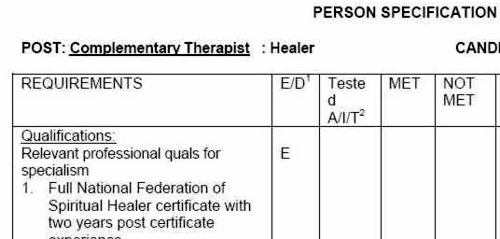
The vocabulary of bait and switch
First, a bit of vocabulary. Alternative medicine is a term that is used for medical treatments that don’t work (or at least haven’t been shown to work). If they worked, they’d be called “medicine”. The anti-malarial, artemesinin, came originally from a Chinese herb, but once it had been purified and properly tested, it was no longer alternative. But the word alternative is not favoured by quacks. They prefer their nostrums to be described as “complementary” –it sounds more respectable. So CAM (complementary and alternative medicine became the politically-correct euphemism. Now it has gone a stage further, and the euphemism in vogue with quacks at the moment is “integrated” or “integrative” medicine. That means, very often, integrating things that don’t work with things that do. But it sounds fashionable. In reality it is designed to confuse politicians who ask for, say, integrated services for old people.
Put another way, the salespeople of quackery have become rather good at bait and switch. The wikepedia definition is as good as any.
Bait-and-switch is a form of fraud, most commonly used in retail sales but also applicable to other contexts. First, customers are “baited” by advertising for a product or service at a low price; second, the customers discover that the advertised good is not available and are “switched” to a costlier product.
As applied to the alternative medicine industry, the bait is usually in the form of some nice touchy-feely stuff which barely mentions the mystical nonsense. But when you’ve bought into it you get the whole panoply of nonsense. Steven Novella has written eloquently about the use of bait and switch in the USA to sell chiropractic, acupuncture, homeopathy and herbal medicine: "The bait is that CAM offers legitimate alternatives, the switch is that it primarily promotes treatments that don’t work or are at best untested and highly implausible.".
The "College of Medicine" provides a near-perfect example of bait and switch. It is the direct successor of the Prince of Wales’ Foundation for Integrated Health. The Prince’s Foundation was a consistent purveyor of dangerous medical myths. When it collapsed in 2010 because of a financial scandal, a company was formed called "The College for Integrated Health". A slide show, not meant for public consumption, said "The College represents a new strategy to take forward the vision of HRH Prince Charles". But it seems that too many people have now tumbled to the idea that "integrated", in this context, means barmpottery. Within less than a month, the new institution was renamed "The College of Medicine". That might be a deceptive name, but it’s a much better bait. That’s why I described the College as a fraud and delusion.
Not only did the directors, all of them quacks, devise a respectable sounding name, but they also succeeded in recruiting some respectable-sounding people to act as figureheads for the new organisation. The president of the College is Professor Sir Graham Catto, emeritus professor of medicine at the University of Aberdeen. Names like his make the bait sound even more plausible. He claims not to believe that homeopathy works, but seems quite happy to have a homeopathic pharmacist, Christine Glover, on the governing council of his college. At least half of the governing Council can safely be classified as quacks.
So the bait is clear. What about the switch? The first thing to notice is that the whole outfit is skewed towards private medicine: see The College of Medicine is in the pocket of Crapita Capita. The founder, and presumably the main provider of funds (they won’t say how much) is the huge outsourcing company, Capita. This is company known in Private Eye as Crapita. Their inefficiency is legendary. They are the folks who messed up the NHS computer system and the courts computer system. After swallowing large amounts of taxpayers’ money, they failed to deliver anything that worked. Their latest failure is the court translation service.. The president (Catto), the vice president (Harry Brunjes) and the CEO (Mark Ratnarajah) are all employees of Capita.
The second thing to notice is that their conferences and courses are a bizarre mixture of real medicine and pure quackery. Their 2012 conference had some very good speakers, but then it had a "herbal workshop" with Simon Mills (see a video) and David Peters (the man who tolerates dowsing as a way to diagnose which herb to give you). The other speaker was Dick Middleton, who represents the huge herbal company, Schwabe (I debated with him on BBC Breakfast), In fact the College’s Faculty of Self-care appears to resemble a marketing device for Schwabe.
Why regulation isn’t working, and can’t work
There are various levels of regulation. The "highest" level is the statutory regulation of osteopathy and chiropractic. The General Chiropractic Council (GCC) has exactly the same legal status as the General Medical Council (GMC). This ludicrous state of affairs arose because nobody in John Major’s government had enough scientific knowledge to realise that chiropractic, and some parts of osteopathy, are pure quackery,
The problem is that organisations like the GCC function more to promote chiropractic than to regulate them. This became very obvious when the British Chiropractic Association (BCA) decided to sue Simon Singh for defamation, after he described some of their treatments as “bogus”, “without a jot of evidence”.
In order to support Singh, several bloggers assessed the "plethora of evidence" which the BCA said could be used to justify their claims. When, 15 months later, the BCA produced its "plethora" it was shown within 24 hours that the evidence was pathetic. The demolition was summarised by lawyer, David Allen Green, in The BCA’s Worst Day.
In the wake of this, over 600 complaints were made to the GCC about unjustified claims made by chiropractors, thanks in large part to heroic work by two people, Simon Perry and Allan Henness. Simon Perry’s Fishbarrel (browser plugin) allows complaints to be made quickly and easily -try it). The majority of these complaints were rejected by the GCC, apparently on the grounds that chiropractors could not be blamed because the false claims had been endorsed by the GCC itself.
My own complaint was based on phone calls to two chiropractors, I was told such nonsense as "colic is down to, er um, faulty movement patterns in the spine". But my complaint never reached the Conduct and Competence committee because it had been judged by a preliminary investigating committee that there was no case to answer. The impression one got from this (very costly) exercise was that the GCC was there to protect chiropractors, not to protect the public.
The outcome was a disaster for chiropractors, wno emerged totally discredited. It was also a disaster for the GCC which was forced to admit that it hadn’t properly advised chiropractors about what they could and couldn’t claim. The recantation culminated in the GCC declaring, in August 2010, that the mythical "subluxation" is a "historical concept " "It is not supported by any clinical research evidence that would allow claims to be made that it is the cause of disease.". Subluxation was a product of the fevered imagination of the founder of the chiropractic cult, D.D. Palmer. It referred to an imaginary spinal lesion that he claimed to be the cause of most diseases. .Since ‘subluxation’ is the only thing that’s distinguished chiropractic from any other sort of manipulation, the admission by the GCC that it does not exist, after a century of pretending that it does, is quite an admission.
The President of the BCA himself admitted in November 2011
“The BCA sued Simon Singh personally for libel. In doing so, the BCA began one of the darkest periods in its history; one that was ultimately to cost it financially,”
As a result of all this, the deficiencies of chiropractic, and the deficiencies of its regulator were revealed, and advertisements for chiropractic are somewhat less misleading. But this change for the better was brought about entirely by the unpaid efforts of bloggers and a few journalists, and not at all by the official regulator, the GCC. which was part of the problem. not the solution. And it was certainly not helped by the organisation that is meant to regulate the GCC, the Council for Health Regulatory Excellence (CHRE) which did nothing whatsoever to stop the farce.
At the other end of the regulatory spectrum, voluntary self-regulation, is an even worse farce than the GCC. They all have grand sounding "Codes of Practice" which, in practice, the ignore totally.
The Society of Homeopaths is just a joke. When homeopaths were caught out recommending sugar pills for prevention of malaria, they did nothing (arguably such homicidal advice deserves a jail sentence).
The Complementary and Natural Healthcare Council (CNHC) is widely know in the blogosphere as Ofquack. I know about them from the inside, having been a member of their Conduct and Competence Committee, It was set up with the help of a £900,000 grant from the Department of Health to the Prince of Wales, to oversee voluntary self-regulation. It fails utterly to do anything useful.. The CNHC code of practice, paragraph 15 , states
“Any advertising you undertake in relation to your professional activities must be accurate. Advertisements must not be misleading, false, unfair or exaggerated”.
When Simon Perry made a complaint to the CNHC about claims being made by a CNHC-registered reflexologist, the Investigating Committee upheld all 15 complaints. But it then went on to say that there was no case to answer because the unjustified claims were what the person had been taught, and were made in good faith.
This is precisely the ludicrous situation which will occur again and again if reflexologists (and many other alternative therapies) are “accredited”. The CNHC said, correctly, that the reflexologist had been taught things that were not true, but then did nothing whatsoever about it apart from toning down the advertisements a bit. They still register reflexologists who make outrageously false claims.
Once again we see that no sensible regulation is possible for subjects that are pure make-believe.
The first two examples deal (or rather, fail to deal) with regulation of outright quackery. But there are dozens of other quangos that sound a lot more respectable.
European Food Standards Agency (EFSA). One of the common scams is to have have your favourite quack treatment classified as a food not as a medicine. The laws about what you can claim have been a lot laxer for foods. But the EFSA has done a pretty good job in stopping unjustified claims for health benefits from foods. Dozens of claims made by makers of probiotics have been banned. The food industry, needless to say, objects very strongly to be being forced to tell the truth. In my view, the ESFA has not gone far enough. They recently issued a directive about claims that could legally be made. Some of these betray the previously high standards of the EFSA. For example you are allowed to say that "Vitamin C contributes to the reduction of tiredness and fatigue" (as long as the product contains above a specified amount of Vitamin C. I’m not aware of any trials that show vitamin C has the slightest effect on tiredness or fatigue, Although these laws do not come into effect until December 2012, they have already been invoked by the ASA has a reason not to uphold a complaint about a multivitamin pill which claimed that it “Includes 8 nutrients that can contribute to the reduction in tiredness and fatigue”
The Advertising Standards Authority (ASA). This is almost the only organisation that has done a good job on false health claims. Their Guidance on Health Therapies & Evidence says
"Whether you use the words ‘treatment’, ‘treat’ or ‘cure’, all are likely to be seen by members of the public as claims to alleviate effectively a condition or symptom. We would advise that they are not used"
"Before and after’ studies with little or no control, studies without human subjects, self-assessment studies and anecdotal evidence are unlikely to be considered acceptable"
"Before and after’ studies with little or no control, studies without human subjects, self-assessment studies and anecdotal evidence are unlikely to be considered acceptable"
They are spot on.
The ASA’s Guidance for Advertisers of Homeopathic Services is wonderful.
"In the simplest terms, you should avoid using efficacy claims, whether implied or direct,"
"To date, the ASA has have not seen persuasive evidence to support claims that homeopathy can treat, cure or relieve specific conditions or symptoms."
That seems to condemn the (mis)labelling allowed by the MHRA as breaking the rules.. Sadly, though, the ASA has no powers to enforce its decisions and only too often they are ignored. The Nightingale collaboration has produced an excellent letter that you can hand to any pharmacist who breaks the rules
The ASA has also judged against claims made by "Craniosacral therapists" (that’s the lunatic fringe of osteopathy). They will presumably uphold complaints about similar claims made (I’m ashamed to say) by UCLH Hospitals.
The private examination company Edexcel sets exams in antiscientific subjects, so miseducating children. The teaching of quackery to 16 year-olds has been approved by a maze of quangos, none of which will take responsibility, or justify their actions. So far I’ve located no fewer than eight of them. The Office of the Qualifications and Examinations Regulator (OfQual), Edexcel, the Qualifications and Curriculum Authority (QCA), Skills for Health, Skills for Care, National Occupational Standards (NOS), private exam company VTCT and the schools inspectorate, Ofsted.. Asking any of these people why they approve of examinations in imaginary subjects meets with blank incomprehension. They fail totally to protect tha public from utter nonsense.
The Department of Education has failed to do anything about the miseducation of children in quackery. In fact it has encouraged it by, for the first time, giving taxpayers’ money to a Steiner (Waldorf) school (at Frome, in Somerset). Steiner schools are run by a secretive and cult-like body of people (read about it). They teach about reincarnation, karma, gnomes, and all manner of nonsense, sometimes with unpleasant racial overtones. The teachers are trained in Steiner’s Anthroposophy, so if your child gets ill at school they’ll probably get homeopathic sugar pills. They might well get measles or mumps too, since Steiner people don’t believe in vaccination.
Incredibly, the University of Aberdeen came perilously close to appointing a chair in anthroposophical medicine. This disaster was aborted by bloggers, and a last minute intervention from journalists. Neither the university’s regulatory mechanisms. nor any others, seemed to realise that a chair in mystical barmpottery was a bad idea.
Trading Standards offices and the Office of Fair Trading.
It is the statutory duty of Trading Standards to enforce the Consumer Protection Regulations (2008) This European legislation is pretty good. it caused a lawyer to write " Has The UK Quietly Outlawed “Alternative” Medicine?". Unfortunately Trading Standards people have consistently refused to enforce these laws. The whole organisation is a mess. Its local office arrangement fails totally to deal with the age of the internet. The situation is so bad that a group of us decided to put them to the test. The results were published in the Medico-Legal Journal, Rose et al., 2012. "Spurious Claims for Health-care Products: An Experimental Approach to Evaluating Current UK Legislation and its Implementation". They concluded "EU directive 2005/29/EC is
largely ineffective in preventing misleading health claims for consumer products in
the UK"
Skills for Health is an enormous quango which produces HR style "competences" for everything under the son. They are mostly quite useless. But those concerned with alternative medicine are not just useless. They are positively harmful. Totally barmy. There are competences and National Occupational Standards for every lunatic made-up therapy under the sun. When I phoned them to discover who’d written them, I learned that the had been drafted by the Prince of Wales’ Foundation for Magic Medicine. And when I joked by asking if they had a competence for talking to trees, I was told, perfectly seriously, “You’d have to talk to LANTRA, the land-based organisation for that.”
That was in January 2008. A lot of correspondence with the head of Skills for Health got nowhere at all. She understood nothing and it hasn’t improved a jot.
This organisation costs a lot of taxpayers’ money and it should have been consigned to the "bonfire of the quangos" (but of course there was no such bonfire in reality). It is a disgrace.
The Quality Assurance Agency (QAA) is supposed to ensure the quality of university courses. In fact it endorses courses in nonsense alternative medicine and so does more harm than good. The worst recent failure of the QAA was in the case of the University of Wales: see Scandal of the University of Wales and the Quality Assurance Agency. The university was making money by validating thousands of external degrees in everything from fundamentalist theology to Chinese Medicine. These validations were revealed as utterly incompetent by bloggers, and later by BBC Wales journalist Ciaran Jenkins (now working for Channel 4).
The mainstream media eventually caught up with bloggers. In 2010, BBC1 TV (Wales) produced an excellent TV programme that exposed the enormous degree validation scam run by the University of Wales. The programme can be seen on YouTube (Part 1, and Part 2). The programme also exposed, incidentally, the uselessness of the Quality Assurance Agency (QAA) which did nothing until the scam was exposed by TV and blogs. Eventually the QAA sent nine people to Malaysia to investigate a dodgy college that had been revealed by the BBC. The trip cost £91,000. It could have been done for nothing if anyone at the QAA knew how to use Google.
The outcome was that the University of Wales stopped endorsing external courses, and it was soon shut down altogether (though bafflingly, its vice-chancellor, Marc Clement was promoted). The credit for this lies entirely with bloggers and the BBC. The QAA did nothing to help until the very last moment.
Throughout this saga Universities UK (UUK), has maintained its usual total passivity. They have done nothing whatsoever about their members who give BSc degrees in anti-scientific subjects. (UUK used to known as the Committee of Vice-Chancellors and Principals).
Council for Health Regulatory Excellence (CHRE), soon to become the PSAHSC,
Back now to the CHRE, the people who failed so signally to sort out the GCC. They are being reorganised. Their consultation document says
"The Health and Social Care Act 20122 confers a new function on the Professional Standards Authority for Health and Social Care (the renamed Council for Healthcare Regulatory Excellence). From November 2012 we will set standards for organisations that hold voluntary registers for people working in health and social care occupations and we will accredit the register if they meet those standards. It will then be known as an ‘Accredited Register’. "
They are trying to decide what the criteria should be for "accreditation" of a regulatory body. The list of those interested has some perfectly respectable organisations, like the British Psychological Society. It also contains a large number of crackpot organisations, like Crystal and Healing International, as well as joke regulators like the CNHC.
They already oversee the Health Professions Council (HPC) which is due to take over Herbal medicine and Traditional Chinese Medicine, with predictably disastrous consequences.
Two of the proposed criteria for "accreditation" appear to be directly contradictory.
Para 2.5 makes the whole accreditation pointless from the point of view of patients
2.5 It will not be an endorsement of the therapeutic validity or effectiveness of any particular discipline or treatment.
Since the only thing that matters to the patient is whether the therapy works (and is safe), accrediting of organisations that ignore this will merely give the appearance of official approval of crystal healing etc etc. This appears to contradict directly
A.7 The organisation can demonstrate that there either is a sound knowledge base underpinning the profession or it is developing one and makes that explicit to the public.
A "sound knowledge base", if it is to mean anything useful at all, means knowledge that the treatment is effective. If it doesn’t mean that, what does it mean?
It seems that the official mind has still not grasped the obvious fact that there can be no sensible regulation of subjects that are untrue nonsense. If it is nonsense, the only form of regulation that makes any sense is the law.
Please fill in the consultation. My completed return can be downloaded as an example, if you wish.
Medicines and Healthcare products Regulatory Agency (MHRA) should be a top level defender of truth. Its strapline is
"We enhance and safeguard the health of the public by ensuring that medicines and medical devices work and are acceptably safe."
The MHRA did something (they won’t tell me exactly what) about one of the most cruel scams that I’ve ever encountered, Esperanza Homeopathic Neuropeptide, peddled for multiple sclerosis, at an outrageous price ( £6,759 for 12 month’s supply). Needless to say there was not a jot of evidence that it worked (and it wasn’t actually homeopathic).
Astoundingly, Trading Standards officers refused to do anything about it.
The MHRA admit (when pushed really hard) that there is precious little evidence that any of the herbs work, and that homeopathy is nothing more than sugar pills. Their answer to that is to forget that bit about "ensuring that medicines … work"
Here’s the MHRA’s Traditional Herbal Registration Certificate for devils claw tablets.

The wording "based on traditional use only" has to be included because of European legislation. Shockingly, the MHRA have allowed them to relegate that to small print, with all the emphasis on the alleged indications. The pro-CAM agency NCCAM rates devil’s claw as "possibly effective" or "insufficient evidence" for all these indications, but that doesn’t matter because the MHRA requires no evidence whatsoever that the tablets do anything. They should, of course, added a statement to this effect to the label. They have failed in their duty to protect and inform the public by allowing this labelling.
But it gets worse. Here is the MHRA’s homeopathic marketing authorisation for the homeopathic medicinal product Arnicare Arnica 30c pillules
It is nothing short of surreal.

|

|
Since the pills contain nothing at all, they don’t have the slightest effect on sprains, muscular aches or bruising. The wording on the label is exceedingly misleading.
If you "pregnant or breastfeeding" there is no need to waste you doctor’s time before swallowing a few sugar pills.
"Do not take a double dose to make up for a missed one". Since the pills contain nothing, it doesn’t matter a damn.
"If you overdose . . " it won’t have the slightest effect because there is nothing in them
And it gets worse. The MHRA-approved label specifies ACTIVE INGREDIENT. Each pillule contains 30c Arnica Montana
No, they contain no arnica whatsoever.

|

|
It truly boggles the mind that men with dark suits and lots of letters after their names have sat for hours only to produce dishonest and misleading labels like these.
When this mislabeling was first allowed, it was condemned by just about every scientific society, but the MHRA did nothing.
The Nightingale Collaboration.
This is an excellent organisation, set up by two very smart skeptics, Alan Henness and Maria MacLachlan. Visit their site regularly, sign up for their newsletter Help with their campaigns. Make a difference.
Conclusions
The regulation of alternative medicine in the UK is a farce. It is utterly ineffective in preventing deception of patients.
Such improvements as have occurred have resulted from the activity of bloggers, and sometime the mainstream media. All the official regulators have, to varying extents, made things worse.
The CHRE proposals promise to make matters still worse by offering "accreditation" to organisations that promote nonsensical quackery. None of the official regulators seem to be able to grasp the obvious fact that is impossible to have any sensible regulation of people who promote nonsensical untruths. One gets the impression that politicians are more concerned to protect the homeopathic (etc, etc) industry than they are to protect patients.
Deception by advocates of alternative medicine harms patients. There are adequate laws that make such deception illegal, but they are not being enforced. The CHRE and its successor should restrict themselves to real medicine. The money that they spend on pseudo-regulation of quacks should be transferred to the MHRA or a reformed Trading Standards organisation so they can afford to investigate and prosecute breaches of the law. That is the only form of regulation that makes sense.
Follow-up
The shocking case of the continuing sale of “homeopathic vaccines” for meningitis, rubella, pertussis etc was highlighted in an excellent TV programme by BBC South West. The failure of the MHRA and the GPC do take any effective action is a yet another illustration of the failure of regulators to do their job. I have to agree with Andy Lewis when he concludes
“Children will die. And the fault must lie with Professor Sir Kent Woods, chairman of the regulator.”
|
This is a very important book. Buy it now (that link is to Waterstone’s Amazon don’t pay tax in the UK, so don’t use them). When you’ve read it, do something about it. The book has lots of suggestions about what to do. |

Stolen from badscience.net |
Peter Medawar, the eminent biologist, in his classic book Advice to a Young Scientist, said this.
“Exaggerated claims for the efficacy of a medicament are very seldom the consequence of any intention to deceive; they are usually the outcome of a kindly conspiracy in which everybody has the very best intentions. The patient wants to get well, his physician wants to have made him better, and the pharmaceutical company would have liked to have put it into the physician’s power to have made him so. The controlled clinical trial is an attempt to avoid being taken in by this conspiracy of good will.”
There was a lot of truth in that 1979, towards the end of the heyday of small molecule pharmacology. Since then, one can argue, things have gone downhill.
First, though, think of life without general anaesthetics, local anaesthetics, antibiotics, anticoagulants and many others. They work well and have done incalculable good. And they were developed by the drug industry.
But remember also that remarkably little is known about medicine. There are huge areas in which neither causes nor cures are known. Treatments for chronic pain, back problems, many sorts of cancer and almost all mental problems are a mess. It just isn’t known what to do. Nobody is to blame for this. Serious medical research has been going on for little more than 60 years, and it turns out to be very complicated. We are doing our best, but are still ignorant about whole huge areas. That leads to a temptation to make things up. Clutching at straws is very evident when it comes to depression, pain and Alzheimer’s disease, among others.
In order to improve matters, one essential is to do fair tests on treatments that we have. Ben Goldacre’s book is a superb account of how this could be done, and how the process of testing has been subverted for commercial gain and to satisfy the vanities of academics.
Of course there is nothing new in criticisms of Big Pharma. The huge fines levied on them for false advertising are well known. The difference is that Goldacre’s book explains clearly what’s gone wrong in great detail, documents it thoroughly, and makes concrete suggestions for improving matters.
Big Pharma has undoubtedly sometimes behaved appallingly in recent years. Someone should be in jail for crimes against patients. They have behaved in much the same way that bankers have. In any huge globalised industry it is always possible to blame someone in another department for the dishonesty. But they aren’t the only people to blame. None of the problems could have arisen with the complicity of academics, universities, and a plethora of regulatory agencies and professional bodies.
The biggest scandal of all is missing data (chapter 1). Companies, and sometmes academics, have suppressed of trials that don’t favour the drugs that they are trying to sell. The antidepressant drug, reboxetine, appeared at first to be good. It had been approved by the Medicines and Healthcare products Regulatory Agency (MHRA) and there was at least one good randomized placebo-controlled trial (RCT) showing it worked. But it didn’t. The manufacturer didn’t provide a complete list of unpublished trials when asked for them. After much work it was found in 2010 that, as well as the published, favourable trial, there were six more trials which had not been published and all six showed reboxetine to be no better than placebo . In comparisons with other antidepressant drugs three small studies (507 patients) showed reboxetine to be as good as its competitors. These were published. But it came to light that data on 1657 patients had never been published and these showed reboxetine to be worse than its rivals.
When all the data for the SSRI antidepressants were unearthed (Kirsch et al., 2008) it turned out that they were no better than placebo for mild or moderate depression. This selective suppression of negative data has happened time and time again. It harms patients and deceives doctors, but, incredibly, it’s not illegal.
Disgracefully, Kirsch et al. had to use a Freedom of Information Act request to get the data from the FDA.
“The output of a regulator is often simply a crude, brief summary: almost a ‘yes’ or ‘no’ about side effects. This is the opposite of science, which is only reliable because everyone shows their working, explains how they know that something is effective or safe, shares their methods and their results, and allows others to decide if they agree with the way they processed and analysed the data.”
|
“the NICE document discussing whether it’s a good idea to have Lucentis, an extremely expensive drug, costing well over £ 1,000 per treatment, that is injected into the eye for a condition called acute macular degeneration. As you can see, the NICE document on whether this treatment is a good idea is censored. Not only is the data on the effectiveness of the treatment blanked out by thick black rectangles, in case any doctor or patient should see it, but absurdly, even the names of some trials are missing, preventing the reader from even knowing of their existence, or cross referencing information about them.Most disturbing of all, as you can see in the last bullet point, the data on adverse events is also censored.”
|
The book lists all the tricks that are used by both industry and academics. Here are some of them.
- Regulatory agencies like the MHRA, the European Medicines Agency (EMA) and the US Food and Drugs Administration (FDA) set a low bar for approval of drugs.
- Companies make universities sign gagging agreements which allow unfavourable results to be suppressed, and their existence hidden.
- Accelerated approval schemes are abused to get quick approval of ineffective drugs and the promised proper tests often don’t materialise
- Disgracefully, even when all the results have been given to the regulatory agencies (which isn’t always). The MHRA, EMA and FDA don’t make them public. We are expected to take their word.
- Although all clinical trials are meant to be registered before they start, the EMA register, unbelievably, is not public. Furthermore there is no check that the results if trials ever get published. Despite mandates that results must be published within a year of finishing the trial, many aren’t. Journals promise to check this sort of thing, but they don’t.
- When the results are published, it is not uncommon for the primary outcome, specified before it started, to have been changed to one that looks like a more favourable result. Journals are meant to check, but mostly don’t.
- Companies use scientific conferences, phony journals, make-believe “seed trials” and “continuing medical education” for surreptitious advertising.
- Companies invent new diseases, plant papers to make you think you’re abnormal, and try to sell you a “cure”. For example, female sexual dysfunction , restless legs syndrome and social anxiety disorder (i.e. shyness). This is called disease-mongering, medicalisation or over-diagnosis. It’s bad.
- Spin is rife. Companies, and authors, want to talk up their results. University PR departments want to exaggerate benefits. Journal editors want sensational papers. Read the results, not the summary. This is universal (but particularly bad in alternative medicine).
- Companies fund patient groups to lobby for pills even when the pills are known to be ineffective. The lobby that demanded that Herceptin should be available to all on the breast cancer patients on the NHS was organised by a PR company working for the manufacturer, Roche. But Herceptin doesn’t work at all in 80% of patients and gives you at best a few extra months of life in advanced cases.
- Ghostwriting of papers is serious corruption. A company writes the paper and senior academics appear as the authors, though they may never have seen the original data. Even in cases where academics have admitted to lying about whether they have seen the data, they go unpunished by their universities. See for example, the case of Professor Eastell.
- By encouraging the funding of “continuing medical education” by companies, the great and the good of academic medicine have let us down badly.
This last point is where the book ends, and it’s worth amplification.
“So what have the great and good of British medicine done to help patients, in the face of this endemic corruption, and these systematic flaws? In 2012, a collaborative document was produced by senior figures in medicine from across the board, called ‘Guidance on Collaboration Between Healthcare Professionals and the Pharmaceutical Industry’. This document was jointly approved by the ABPI, the Department of Health, the Royal Colleges of Physicians, Nursing, Psychiatrists, GPs, the Lancet, the British Medical Association, the NHS Confederation, and so on. ”
“It contains no recognition of the serious problems we have seen in this book. In fact, quite the opposite: it makes a series of assertions about them that are factually incorrect.”
“It states that drug reps ‘can be a useful resource for healthcare professionals’. Again, I’m not sure why the Royal Colleges, the BMA, the Department of Health and the NHS Confederation felt the need to reassert this to the doctors of the UK, on behalf of industry, when the evidence shows that drug reps actively distort prescribing practices. But that is the battle you face, trying to get these issues taken seriously by the pinnacle of the medical establishment.”
This is perhaps the most shameful betrayal of all. The organisations that should protect patients have sold them out.
You may have been sold out by your “elders and betters”, but you can do something. The “What to do” sections of the book should be produced as a set of flash cards, as a reminder that matters can be improved.
It is shameful that this book was not written by a clinical pharmacologist, or a senior doctor, or a Royal College, or a senior academic. Why has the British Pharmacological Society said nothing?
It is shameful too that this book was not written by one of the quacks who are keen to defend the $60 billion alternative medicine industry (which has cured virtually nothing) and who are strident in their criticism of the 600 billion dollar Pharma industry. They haven’t done the work that Goldacre has to analyse the real problems. All they have done is to advocate unfair tests, because that is the only sort their treatments can pass.
It’s weird that medicine, the most caring profession, is more corrupt than any other branch of science. The reason, needless to say, is money. Well, money and vanity. The publish or perish mentality of senior academics encourages dishonesty. It is a threat to honest science.
Goldacre’s book shows the consequences: harm to patients and huge wastage of public money.
Read it.
Do something.
Follow-up
7 October, 2012, The Observer
Goldacre wrote
"I think it’s really disappointing that nobody, not the Royal Colleges, the Academy of Medical Sciences, the British Pharmacological Society, the British Medical Association, none of these organisations have stood up and said: selective non-publication of unflattering trial data is research misconduct, and if you do it you will be booted out. And I think they really urgently should."
Exactly.
Academic staff are going to be fired at Queen Mary University of London (QMUL). It’s possible that universities may have to contract a bit in hard times, so what’s wrong?
What’s wrong is that the victims are being selected in a way that I can describe only as insane. The criteria they use are guaranteed to produce a generation of second-rate spiv scientists, with a consequent progressive decline in QMUL’s reputation.
The firings, it seems, are nothing to do with hard financial times, but are a result of QMUL’s aim to raise its ranking in university league tables.
In the UK university league table, a university’s position is directly related to its government research funding. So they need to do well in the 2014 ‘Research Excellence Framework’ (REF). To achieve that they plan to recruit new staff with high research profiles, take on more PhD students and post-docs, obtain more research funding from grants, and get rid of staff who are not doing ‘good’ enough research.
So far, that’s exactly what every other university is trying to do. This sort of distortion is one of the harmful side-effects of the REF. But what’s particularly stupid about QMUL’s behaviour is the way they are going about it. You can assess your own chances of survival at QMUL’s School of Biological and Chemical Sciences from the following table, which is taken from an article by Jeremy Garwood (Lab Times Online. July 4, 2012). The numbers refer to the four year period from 2008 to 2011.
|
Category of staff |
Research Output Quantity |
Research Output |
Research Income (£) |
Research Income (£) |
|
Professor |
11 |
2 |
400,000 |
at least 200,000 |
|
Reader |
9 |
2 |
320,000 |
at least 150,000 |
|
Senior Lecturer |
7 |
1 |
260,000 |
at least 120,000 |
|
Lecturer |
5 |
1 |
200,000 |
at least 100,000 |
|
In addition to the three criteria, ‘Research Output ‐ quality’, ‘Research Output – quantity’, and ‘Research Income’, there is a minimum threshold of 1 PhD completion for staff at each academic level. All this data is “evidenced by objective metrics; publications cited in Web of Science, plus official QMUL metrics on grant income and PhD completion.” To survive, staff must meet the minimum threshold in three out of the four categories, except as follows: Demonstration of activity at an exceptional level in either ‘research outputs’ or ‘research income’, termed an ‘enhanced threshold’, is “sufficient” to justify selection regardless of levels of activity in the other two categories. And what are these enhanced thresholds? |
|
The university notes that the above criteria “are useful as entry standards into the new school, but they fall short of the levels of activity that will be expected from staff in the future. These metrics should not, therefore, be regarded as targets for future performance.” This means that those who survived the redundancy criteria will simply have to do better. But what is to reassure them that it won’t be their turn next time should they fail to match the numbers? To help them, Queen Mary is proposing to introduce ‘D3’ performance management (www.unions.qmul.ac.uk/ucu/docs/d3-part-one.doc). Based on more ‘administrative physics’, D3 is shorthand for ‘Direction × Delivery × Development.’ Apparently “all three are essential to a successful team or organisation. The multiplication indicates that where one is absent/zero, then the sum is zero!” D3 is based on principles of accountability: “A sign of a mature organisation is where its members acknowledge that they face choices, they make commitments and are ready to be held to account for discharging these commitments, accepting the consequences rather than seeking to pass responsibility.” Inspired? |
I presume the D3 document must have been written by an HR person. It has all the incoherent use of buzzwords so typical of HR. And it says "sum" when it means "product" (oh dear, innumeracy is rife).
The criteria are utterly brainless. The use of impact factors for assessing people has been discredited at least since Seglen (1997) showed that the number of citations that a paper gets is not perceptibly correlated with the impact factor of the journal in which it’s published. The reason for this is the distribution of the number of citations for papers in a particular journal is enormously skewed. This means that high-impact journals get most of their citations from a few articles.
|
The distribution for Nature is shown in Fig. 1. Far from being gaussian, it is even more skewed than a geometric distribution; the mean number of citations is 114, but 69% of papers have fewer than the mean, and 24% have fewer than 30 citations. One paper has 2,364 citations but 35 have 10 or fewer. ISI data for citations in 2001 of the 858 papers published in Nature in 1999 show that the 80 most-cited papers (16% of all papers) account for half of all the citations (from Colquhoun, 2003)
|
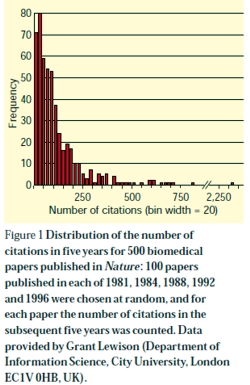
|
The Institute of Scientific Information, ISI, is guilty of the unsound statistical practice of characterizing a distribution by its mean only, with no indication of its shape or even its spread. School of Biological and Chemical Sciences-QMUL is expecting everyone has to be above average in the new regime. Anomalously, the thresholds for psychologists are lower because it is said that it’s more difficult for them to get grants. This undermines even the twisted logic applied at the outset.
All this stuff about skewed distributions is, no doubt, a bit too technical for HR people to understand. Which, of course, is precisely why they should have nothing to do with assessing people.
At a time when so may PhDs fail to get academic jobs we should be limiting the numbers. But QMUL requires everyone to have a PhD student, not for the benefit of the student, but to increase its standing in league tables. That is deeply unethical.
The demand to have two papers in journals with impact factor greater than seven is nonsense. In physiology, for example, there are only four journals with an impact factor greater that seven and three of them are review journals that don’t publish original research. The two best journals for electrophysiology are Journal of Physiology (impact factor 4.98, in 2010) and Journal of General Physiology (IF 4.71). These are the journals that publish papers that get you into the Royal Society or even Nobel prizes. But for QMUL, they don’t count.
I have been lucky to know well three Nobel prize winners. Andrew Huxley. Bernard Katz, and Bert Sakmann. I doubt that any of them would pass the criteria laid down for a professor by QMUL. They would have been fired.
The case of Sakmann is analysed in How to Get Good Science, [pdf version]. In the 10 years from 1976 to 1985, when Sakmann rose to fame, he published an average of 2.6 papers per year (range 0 to 6). In two of these 10 years he had no publications at all. In the 4 year period (1976 – 1979 ) that started with the paper that brought him to fame (Neher & Sakmann, 1976) he published 9 papers, just enough for the Reader grade, but in the four years from 1979 – 1982 he had 6 papers, in 2 of which he was neither first nor last author. His job would have been in danger if he’d worked at QMUL. In 1991 Sakmann, with Erwin Neher, got the Nobel Prize for Physiology or Medicine.
The most offensive thing of the lot is the way you can buy yourself out if you publish 26 papers in the 4 year period. Sakmann came nowhere near this. And my own total, for the entire time from my first paper (1963) until I was elected to the Royal Society (May 1985) was 27 papers (and 7 book chapters). I would have been fired.
Peter Higgs had no papers at all from the time he moved to Edinburgh in 1960, until 1964 when his two paper’s on what’s now called the Higgs’ Boson were published in Physics Letters. That journal now has an impact factor less than 7 so Queen Mary would not have counted them as “high quality” papers, and he would not have been returnable for the REF. He too would have been fired.
The encouragement to publish large numbers of papers is daft. I have seen people rejected from the Royal Society for publishing too much. If you are publishing a paper every six weeks, you certainly aren’t writing them, and possibly not even reading them. Most likely you are appending your name to somebody else’s work with little or no checking of the data. Such numbers can be reached only by unethical behaviour, as described by Peter Lawrence in The Mismeasurement of Science. Like so much managerialism, the rules provide an active encouragement to dishonesty.
In the face of such a boneheaded approach to assessment of your worth, it’s the duty of any responsible academic to point out the harm that’s being done to the College. Richard Horton, in the Lancet, did so in Bullying at Barts. There followed quickly letters from Stuart McDonald and Nick Wright, who used the Nuremburg defence, pointing out that the Dean (Tom Macdonald) was just obeying orders from above. That has never been as acceptable defence. If Macdonald agreed with the procedure, he should be fired for incompetence. If he did not agree with it he should have resigned.
It’s a pity, because Tom Macdonald was one of the people with whom I corresponded in support of Barts’ students who, very reasonably, objected to having course work marked by homeopaths (see St Bartholomew’s teaches antiscience, but students revolt, and, later, Bad medicine. Barts sinks further into the endarkenment). In that case he was not unreasonable, and, a mere two years later I heard that he’d taken action.
To cap it all, two academics did their job by applying a critical eye to what’s going on at Queen Mary. They wrote to the Lancet under the title Queen Mary: nobody expects the Spanish Inquisition
"For example, one of the “metrics” for research output at professorial level is to have published at least two papers in journals with impact factors of 7 or more. This is ludicrous, of course—a triumph of vanity as sensible as selecting athletes on the basis of their brand of track suit. But let us follow this “metric” for a moment. How does the Head of School fair? Zero, actually. He fails. Just consult Web of Science. Take care though, the result is classified information. HR’s “data” are marked Private and Confidential. Some things must be believed. To question them is heresy."
Astoundingly, the people who wrote this piece are now under investigation for “gross misconduct”. This is behaviour worthy of the University of Poppleton, as pointed out by the inimitable Laurie Taylor, in Times Higher Education (June 7)
|
The rustle of censorship It appears that last week’s edition of our sister paper, The Poppleton Evening News, carried a letter from Dr Gene Ohm of our Biology Department criticising this university’s metrics-based redundancy programme. We now learn that, following the precedent set by Queen Mary, University of London, Dr Ohm could be found guilty of “gross misconduct” and face “disciplinary proceedings leading to dismissal” for having the effrontery to raise such issues in a public place. Louise Bimpson, the corporate director of our ever-expanding human resources team, admitted that this response might appear “severe” but pointed out that Poppleton was eager to follow the disciplinary practices set by such soon-to-be members of the prestigious Russell Group as Queen Mary. Thus it was only to be expected that we would seek to emulate its espousal of draconian censorship. She hoped this clarified the situation. |
David Bignell, emeritus professor of zoology at Queen Mary hit the nail on the head.
"These managers worry me. Too many are modest achievers, retired from their own studies, intoxicated with jargon, delusional about corporate status and forever banging the metrics gong. Crucially, they don’t lead by example."
What the managers at Queen Mary have failed to notice is that the best academics can choose where to go.
People are being told to pack their bags and move out with one day’s notice. Access to journals stopped, email address removed, and you may need to be accompanied to your (ex)-office. Good scientists are being treated like criminals.
What scientist in their right mind would want to work at QMUL, now that their dimwitted assessment methods, and their bullying tactics, are public knowledge?
The responsibility must lie with the principal, Simon Gaskell. And we know what the punishment is for bringing your university into disrepute.
Follow-up
Send an email. You may want to join the many people who have already written to QMUL’s principal, Simon Gaskell (principal@qmul.ac.uk), and/or to Sir Nicholas Montagu, Chairman of Council, n.montagu@qmul.ac.uk.
Sunday 1 July 2012. Since this blog was posted after lunch on Friday 29th June, it has had around 9000 visits from 72 countries. Here is one of 17 maps showing the origins of 200 of the hits in the last two days
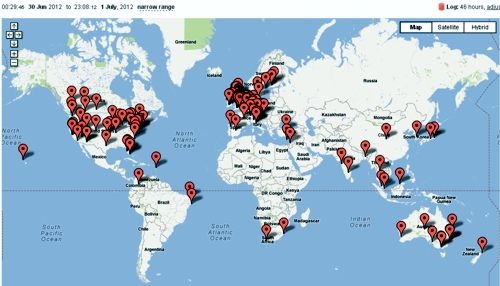
The tweets about QMUL are collected in a Storify timeline.
I’m reminded of a 2008 comment, on a post about the problems imposed by HR, In-human resources, science and pizza.
Thanks for that – I LOVED IT. It’s fantastic that the truth of HR (I truly hate that phrase) has been so ruthlessly exposed. Should be part of the School Handbook. Any VC who stripped out all the BS would immediately retain and attract good people and see their productivity soar.
That’s advice that Queen Mary should heed.
Part of the reason for that popularity was Ben Goldacre’s tweet, to his 201,000 followers
“destructive, unethical and crude metric incentives in academia (spotlight QMUL) bit.ly/MFHk2H by @david_colquhoun”
3 July 2012. I have come by a copy of this email, which was sent to Queen Mary by a senior professor from the USA (word travels fast on the web). It shows just how easy it is to destroy the reputation of an institution.
|
Sir Nicholas Montagu, Chairman of Council, and Principal Gaskell, I was appalled to read the criteria devised by your University to evaluate its faculty. There are so flawed it is hard to know where to begin. Your criteria are antithetical to good scientific research. The journals are littered with weak publications, which are generated mainly by scientists who feel the pressure to publish, no matter whether the results are interesting, valid, or meaningful. The literature is flooded by sheer volume of these publications. Your attempt to require “quality” research is provided by the requirement for publications in “high Impact Factor” journals. IF has been discredited among scientists for many reasons: it is inaccurate in not actually reflecting the merit of the specific paper, it is biased toward fields with lots of scientists, etc. The demand for publications in absurdly high IF journals encourages, and practically enforces scientific fraud. I have personally experienced those reviews from Nature demanding one or two more “final” experiments that will clinch the publication. The authors KNOW how these experiments MUST turn out. If they want their Nature paper (and their very academic survival if they are at a brutal, anti-scientific university like QMUL), they must get the “right” answer. The temptation to fudge the data to get this answer is extreme. Some scientists may even be able to convince themselves that each contrary piece of data that they discard to ensure the “correct” answer is being discarded for a valid reason. But the result is that scientific misconduct occurs. I did not see in your criteria for “success” at QMUL whether you discount retracted papers from the tally of high IF publications, or perhaps the retraction itself counts as yet another high IF publication! Your requirement for each faculty to have one or more postdocs or students promotes the abusive exploitation of these individuals for their cheap labor, and ignores the fact that they are being “trained” for jobs that do not exist. The “standards” you set are fantastically unrealistic. For example, funding is not graded, but a sharp step function – we have 1 or 2 or 0 grants and even if the average is above your limits, no one could sustain this continuously. Once you have fired every one of your faculty, which will almost certainly happen within 1-2 rounds of pogroms, where will you find legitimate scientists who are willing to join such a ludicrous University? |
4 July 2012.
Professor John F. Allen is Professor of Biochemistry at Queen Mary, University of London, and distinguished in the fields of Photosynthesis, Chloroplasts, Mitochondria, Genome function and evolution and Redox signalling. He, with a younger colleague, wrote a letter to the Lancet, Queen Mary: nobody expects the Spanish Inquisition. It is an admirable letter, the sort of thing any self-respecting academic should write. But not according to HR. On 14 May, Allen got a letter from HR, which starts thus.
|
14th May 2012 Dear Professor Allen I am writing to inform you that the College had decided to commence a factfinding investigation into the below allegation: That in writing and/or signing your name to a letter entitled "Queen Mary: nobody expects the Spanish Inquisition," (enclosed) which was published in the Lancet online on 4th May 2012, you sought to bring the Head of School of Biological and Chemical Sciences and the Dean for Research in the School of Medicine and Dentistry into disrepute. . . . . Sam Holborn |
Download the entire letter. It is utterly disgraceful bullying. If anyone is bringing Queen Mary into disrepute, it is Sam Holborn and the principal, Simon Gaskell.
Here’s another letter, from the many that have been sent. This is from a researcher in the Netherlands.
|
Dear Sir Nicholas,
I am addressing this to you in the hope that you were not directly involved in creating this extremely stupid set of measures that have been thought up, not to improve the conduct of science at QMUL, but to cheat QMUL’s way up the league tables over the heads of the existing academic staff. Others have written more succinctly about the crass stupidity of your Human Resources department than I could, and their apparent ignorance of how science actually works. As your principal must bear full responsibility for the introduction of these measures, I am not sending him a copy of this mail. I am pretty sure that his “principal” mail address will no longer be operative. We have had a recent scandal in the Netherlands where a social psychology professor, who even won a national “Man of the Year” award, as well as as a very large amount of research money, was recently exposed as having faked all the data that went into a total number of articles running into three figures. This is not the sort of thing one wants to happen to one’s own university. He would have done well according to your REF .. before he was found out. Human Resources departments have gained too much power, and are completely incompetent when it comes to judging academic standards. Let them get on with the old dull, and gobbledigook-free, tasks that personnel departments should be carrying out. |
5 July 2012.
Here’s another letter. It’s from a member of academic staff at QMUL, someone who is not himself threatened with being fired. It certainly shows that I’m not making a fuss about nothing. Rather, I’m the only person old enough to say what needs to be said without fear of losing my job and my house.
|
Dear Prof. Colquhoun,
I am an academic staff member in SBCS, QMUL. I am writing from my personal email account because the risks of using my work account to send this email are too great. I would like to thank you for highlighting our problems and how we have been treated by our employer (Queen Mary University of London), in your blog. I would please urge you to continue to tweet and blog about our plight, and staff in other universities experiencing similarly horrific working conditions. I am not threatened with redundancy by QMUL, and in fact my research is quite successful. Nevertheless, the last nine months have been the most stressful of all my years of academic life. The best of my colleagues in SBCS, QMUL are leaving already and I hope to leave, if I can find another job in London. Staff do indeed feel very unfairly treated, intimidated and bullied. I never thought a job at a university could come to this.
Thank you again for your support. It really does matter to the many of us who cannot really speak out openly at present.
Best regards,
|
In a later letter, the same person pointed out
"There are many of us who would like to speak more openly, but we simply cannot."
"I have mortgage . . . . Losing my job would probably mean losing my home too at this point."
"The plight of our female staff has not even been mentioned. We already had very few female staff. And with restructuring, female staff are more likely to be forced into teaching-only contracts or indeed fired"."
"total madness in the current climate – who would want to join us unless desperate for a job!"
“fuss about nothing” – absolutely not. It is potentially a perfect storm leading to teaching and research disaster for a university! Already the reputation of our university has been greatly damaged. And senior staff keep blaming and targeting the “messengers"."
6 July 2012.
Througn the miracle of WiFi, this is coming from Newton, MA. The Lancet today has another editorial on the Queen Mary scandal.
"As hopeful scientists prepare their applications to QMUL, they should be aware that, behind the glossy advertising, a sometimes harsh, at times repressive, and disturbingly unforgiving culture awaits them."
That sums it up nicely.
24 July 2012. I’m reminded by Nature writer, Richard van Noorden (@Richvn) that Nature itself has wriiten at least twice about the iniquity of judging people by impact factors. In 2005 Not-so-deep impact said
"Only 50 out of the roughly 1,800 citable items published in those two years received more than 100 citations in 2004. The great majority of our papers received fewer than 20 citations."
"None of this would really matter very much, were it not for the unhealthy reliance on impact factors by administrators and researchers’ employers worldwide to assess the scientific quality of nations and institutions, and often even to judge individuals."
And, more recently, in Assessing assessment” (2010).
29 July 2012. Jonathan L Rees. of the University of Edinburgh, ends his blog:
"I wonder what career advice I should offer to a young doctor circa 2012. Apart from not taking a job at Queen Mary of course. "
How to select candidates
I have, at various times, been asked how I would select candidates for a job, if not by counting papers and impact factors. This is a slightly modified version of a comment that I left on a blog, which describes roughly what I’d advocate
After a pilot study the entire Research Excellence Framework (which attempts to assess the quality of research in every UK university) made the following statement.
“No sub-panel will make any use of journal impact factors, rankings, lists or the perceived standing of publishers in assessing the quality of research outputs”
It seems that the REF is paying attention to the science not to bibliometricians.
It has been the practice at UCL to ask people to nominate their best papers (2 -4 papers depending on age). We then read the papers and asked candidates hard questions about them (not least about the methods section). It’s a method that I learned a long time ago from Stephen Heinemann, a senior scientist at the Salk Institute. It’s often been surprising to learn how little some candidates know about the contents of papers which they themselves select as their best. One aim of this is to find out how much the candidate understands the principles of what they are doing, as opposed to following a recipe.
Of course we also seek the opinions of people who know the work, and preferably know the person. Written references have suffered so much from ‘grade inflation’ that they are often worthless, but a talk on the telephone to someone that knows both the work, and the candidate, can be useful, That, however, is now banned by HR who seem to feel that any knowledge of the candidate’s ability would lead to bias.
It is not true that use of metrics is universal and thank heavens for that. There are alternatives and we use them.
Incidentally, the reason that I have described the Queen Mary procedures as insane, brainless and dimwitted is because their aim to increase their ratings is likely to be frustrated. No person in their right mind would want to work for a place that treats its employees like that, if they had any other option. And it is very odd that their attempt to improve their REF rating uses criteria that have been explicitly ruled out by the REF. You can’t get more brainless than that.
This discussion has been interesting to me, if only because it shows how little bibliometricians understand how to get good science.
One of my first posts about nonsense taught in universities was about the University of Westminster (April 2008): Westminster University BSc: “amethysts emit high yin energy”. since then, there have been several more revelations.
 Professor Petts |
The vice-cnancellor of Westminster, Professor Geoffrey Petts, with whom the buck stops, did have an internal review but its report was all hot air and no action resulted (see A letter to the Times, and Progress at Westminster). That earned Professor Petts an appearence in Private Eye Crystal balls. Professor Petts in Private Eye (and it earned me an invitation to a Private Eye lunch, along with Francis Wheen, Charlie Booker, Ken Livingstone . . ). It also earned Petts an appearence in the Guardian (The opposite of science). |
By that time Salford University had closed down all its CAM, and the University of Central Lancashire was running an honest internal review which resulted in closure of (almost) all of their nonsense degrees. But Westminster proved more resistant to sense and, although they closed down homeopathy, they still remain the largest single provider of degrees in junk medicine. See, for example More make-believe from the University of Westminster. This time it’s Naturopathy, and
The last BSc (Hons) Homeopathy closes! But look at what they still teach at Westminster University.
It’s interesting that Westminster always declined to comply with Freedom of Information requests, yet I had more from them than from most places. All the information about what’s taught at Westminster came from leaks from within the university. Westminster has more moles than a suburban garden. They were people with conscience who realised that the university was harming itself. They would claim that they were trying to save the university from some remarkably bad management. I claim also that I’m working in the interests of the university.
In the wake of the victory at the Information Tribunal, I sent a Freedom of Information Act (FOIA) request for for samples of teaching materials from all of their courses. This time they couldn’t legally refuse. The first batch has just arrived, so here are a few selected gems of utter nonsense. Well, it is worse than nonsense because it endangers the health of sick people.
A letter to the university from a student
Before getting on to the slides, here’s a letter that was supplied under FOIA. It was sent anonymously to the university. I was told that this was the only letter of complaint but I happen to know that’s not true so I’ve asked again. This one was forwarded to the vice-chancellor in 2008, and to the review committee. Both seem to have ignored it. Judging from the wording, one would guess that it came from one of their own undergraduates. :Here are some extracts.[download whole letter]
|
It is a flagrant contradiction of a ‘science’ in the BSc to have these practices, but it also jeopardises our profession, which is under DoH review and being constantly attacked in the media Gustifiable I suggest). We are taught that simply tasting plant tinctures can tell us which part of the body they work. on and what they do in the body. We are given printed charts with an outline of the body on to record our findings on. This is both nonsense, but is dangerous as it implies that the pharmacology of plant tinctures can be divined by taste alone. In class we are taught that we can divine the drug actions or use of an unknown plant simply by tasting an alcohol extract. Science? or dangerous fantasy. There are lecturers taking clinics who allow students to dowse and partake themselves in dowsing or pendulums to diagnose and even to test suitability of plant drugs. Dowsing is taught to us by some lecturers and frowned upon by others but we feel it brings the herbal medicine into a poor light as it is unscientific and bogus nonsense. We are concerned that we have seen the course leader brush over this practice as though she is frightened to make a stand. |
The letter seems to refer to a course in herbal medicine. That is a subject that could be studied scientifically, though to do so would leave students unemployed because so few herbal treatments have been shown to work. It obviously is not being studied scientifically: but even teaching students about dowsing and pendulums does not seem to have stirred the vice-chancellor into action.
David Peters: wishful thinking?
David Peters is a nice man. He’s the Clinical Director of Westminster’s School of Integrated Health. I debated with him on the excellent Radio 4 Programme, Material World.
His lecture on "Complementary Healthcare in the NHS" showed some fine wishful thinking.
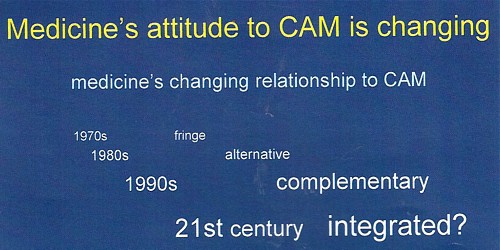
It shows the progress of the euphemisms that quacks use to try to gain respectability, but little else. Interestingly, later slides show a bit more realism.
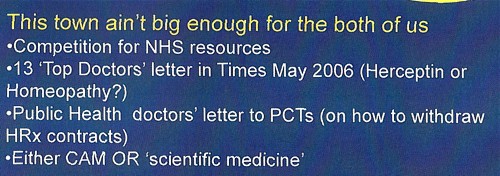
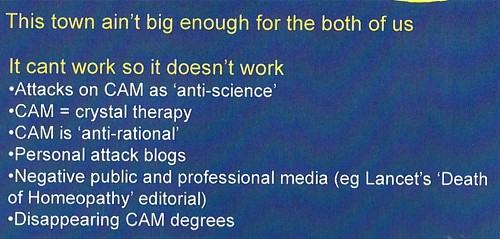
So he has noticed that the tide has turned and that a lot of people are no longer willing to be palmed off with new age gobbledygook. And yes, courses are shutting. Perhaps his course will be the next to shut?
According to an internal Westminster email that found its way to me,
The following courses have been closed/identified for closure due to poor recruitment :
- BSc degrees in Homeopathy and Remedial Massage & Neuromuscular Therapy, students completing by September 2011
- MA degrees in International Community development, Community development and Faith-based Community development, students completing by September 2011
- BSc degree Complementary Medicine
- Graduate diploma BMS
The following courses have been identified as ‘at risk’ (School definition) and will be discussed at the APRG and University Review Group2, due to poor recruitment and high cost of delivery:
- Integrated Health Scheme: BSc Complementary Medicine, Naturopathy; BSc Chinese Medicine; BSc Nutritional Therapy; BSc Herbal Medicine
The BSc (Hons) degree in naturopathy
Naturopathy us pretty bizarre, because it consists largely of doing nothing at all, beyond eating vegetables . Being ill is good for you.
Perhaps the best source to judge claims is the US National Center for Complementary and Alternive Medicine (NCCAM), a branch of the National Institutes of Health. This is the outfit that has spent over a billion dollars of US taxpayers’ money testing alternative medicines and for all that money has not come up with a single useful treatment. They never link to any sort of critical comment, and are nothing if not biassed towards all things alternative. If they can’t come up with evidence. nobody can. Two useful links to NCCAM are Herbs at a glance, and Health Topics A – Z.
Uses of herbal teas in naturopathic dietary care
I was sent a set of over 50 slides on "Herbal Teas/Decoctions (3CMWS03, 1/02, Uses of herbal teas in naturopathic dietary care). About half of them amount to little more than ‘how to make a cup of tea’. but then we get onto uses, but then a lot of fantasy ensues.
What NNCAM says about dandelion. There is no compelling scientific evidence for using dandelion as a treatment for any medical condition.
What Westminster says
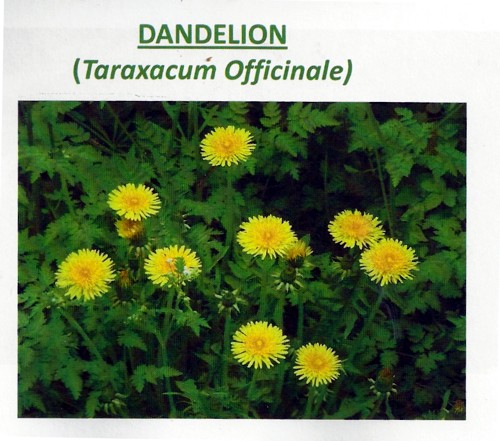
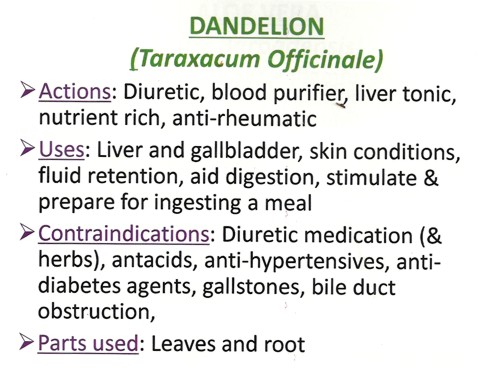
Well I know what a diuretic is, but "blood purifier" and "liver tonic" are meaningless gobbledygook. We’ve been through this before with Red Clover (see Michael Quinion’s .look at the term "blood cleanser"). Using words like them is the very opposite of education.
What NCCAM says.about chamomile: Chamomile has not been well studied in people so there is little evidence to support its use for any condition.
What Westminster says

So, judging by NCCAM, these claims are unjustified. It’s teaching folk-lore as though it meant something.
More dangerous advice comes when we get to the ‘repertories’.

Infections can kill you, They are one of the modest number of things that pharmacology can usually cure, rather than treat symptomatically. If you go to a Westminster-trained naturopath with a serious infection and follow their advice to put garlic in your socks, you will not just be smelly, You could die.
Allergy and Intolerance 3CMwS03 18/02
|
Treating allergies, misdiagnosed by fraudulent tests, is very big business for the ‘health food industry’, This lecture, by R. Newman Turner ND, DO, BAc, started tolerably but descended to a nadir when it mentions, apparently seriously, two of the best known fraudulent methods of allergy diagnosis, the Vega test and "Applied Kinesiology". Kinesiology Sounds sort of sciencey, but Applied Kinesiology is actually a fraudulent and totally ineffective diagnostic method invented by (you guessed) a chiropractor. It has been widely used by alternative medicine to misdiagnose food allergies. It does not work (Garrow, 1988: download reprint). |
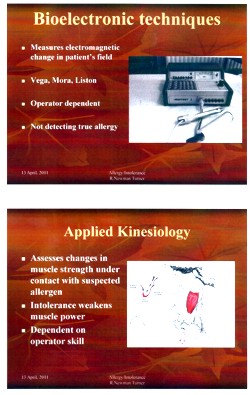
|
Could this be the same R Newman Turner who wrote a book on Naturopathic First Aid? The mind boggles.
Naturopathic Detoxification 23 CMES03 25/02 Detox Myth of Fact
|
This lecture was the responsibility of Irving S Boxer ND DO MRN LCH, a naturopath, homeopath and osteopath in private practice. Don’t be fooled by the implied question in the title. It might have been taken to suggest a critical approach. Think again. There is all the usual make-believe about unspecified and imaginary toxins that you must get rid of with enemas and vegetables. |
|
|
The skin brushing does not quite plumb the depths of Jacqueline Young’s Taking an air bath , but presumably it is something similar. "Liver activation" by castor oil packs is pure unadulterated gobblydygook. The words mean nothing. Their attempt to divide all foods into those that cleanse and those that clog sounds reminiscent of the Daily Mail’s ontological oncology project. |
 
|
The practice of healing (3CMSS01 2/12)
Next we retreat still further into fantasy land
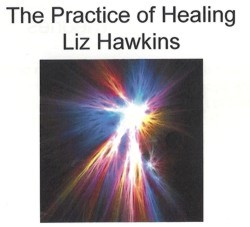
|

|
All pure hokum, of course’ She could have added "craniosacral therapy" (at present the subject of a complaint against the UCL Hospitals Trust (that’s the NHS, not UCL) to the Advertising Standards Authority,
 |
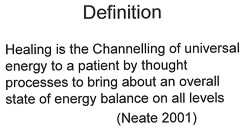 |
Is that definition quite clear?
In fact this sort of nonsense about rays coming from your hands was disproved experimentally, in a rather famous paper, the only paper in the Journal of the American Medical Association to have been written by a 9-year old. Emily Rosa. She (with some help from her parents) devised a simple test for her 4th (US) grade science fair project. It was later repeated under more controlled conditions and written up for JAMA [download reprint] . It showed that the claims of ‘therapeutic touch" practitioners to be able to detect "auras" were totally false. No subsequent work has shown otherwise. Why, then, does the University of Westminster teach it as part of a Bachelor of Science degree?
You can see Emily Rosa herself explain why “therapeutic touch is bullshit” with Penn and Teller, in Penn and Teller Expose Therapeutic Touch.
Environmental stress
The last bit of hokum (for the moment) is one of the best. This one has every myth under the sun (including some I hadn’t heard of).

|
The lecturer, Val Bullen, was also responsible for the infamous "Amethysts emit high Yin energy" slide. One of her own students desribes her as "sweet but deluded". I have nothing against Ms Bullen, She can believe whatever she wants. My problem is with the vice-chancellor, Prof Geoffrey Petts, who seems to think that this sort of stuff is appropriate for a BSc. |
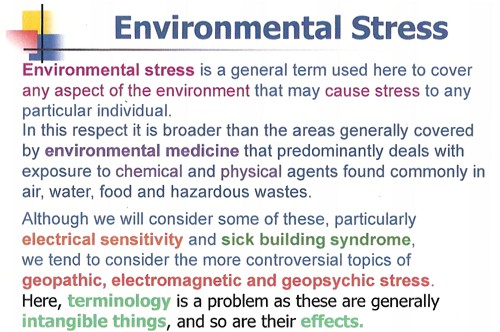
|
Everything barmy is here. Mobile phones, power lines, underwater streams, ley lines, sick building syndrome, are all reasons why you don’t feel 100 percent, Actually my reason is having to read this junk. The "definitions" are, as always, just meaningless words.
|
But don’t despair. Help is at hand.
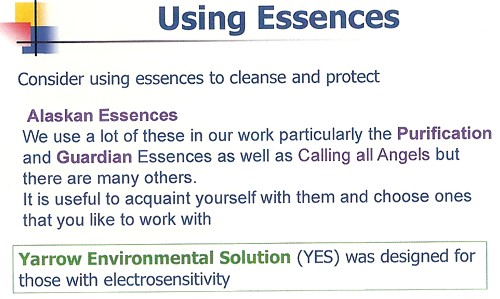
Just in case you happen to have run out of Alaskan Calling All Angels Essence, you can buy it from Baldwin’s for £19.95. It’s "designed to invoke the nurturing, uplifting and joyful qualities of the angelic kingdom.", and what’s more "can also use them any time to cleanse, energize, and protect your auric field." Well that’s what it says.in the ad.
Yarrow Environmental Solution looks like good stuff too. Only £7.95 for 7.5 ml. For that you get a lot. It will
" . . strengthen and protect against toxic environmental influences, geopathic stress, and other hazards of technology-dominated modern life. This includes the disruptive effects of radiation on human energy fields from X-rays, televisions, computer monitors, electromagnetic fields, airplane flights or nuclear fall-out."
OK stop giggling. This is serious stuff, taught in a UK university as part of a BSc degree, and awarded a high score by the Quality Assurance Agency (QAA).
Professor Petts, are you listening? I believe it is you, not I, who is bringing your university into disrepute.
The slides shown here are copyright of the University of Westminster or of the author of the lecture. They are small sample of what I was sent and are reproduced under the “fair quotation” provision, in the public interest.
Follow-up
5 May 2011. By sheer coincidence, Emily and Linda Rosa were passing through London. They called for lunch and here’s a picture (with Ben Goldacre) in UCL’s (endangered) Housman room. Linda kindly gave me a copy of her book Attachment Therapy on Trial: The Torture and Death of Candace Newmaker. [Download reprint of Rosa’s paper..]
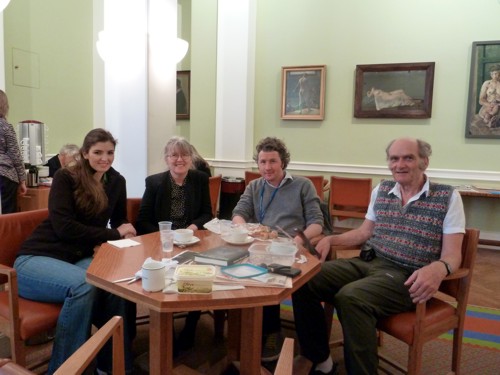
.
6 May 2011. Talking of the “vibrational medicine” fantasy, I had an email that pointed out a site that plumbs new depths in fantasy physics. It’s on the PositiveHealthOnline website: A post there, Spirals and Energy in Nature, was written by Robert McCoy. He claims to have worked on microprocessor layout design, but anyone with school physics could tell that the article is sheer nonsense. In a way it is much more objectionable that the silly slides with coloured rays used in the Westminster course. McCoy’s post seeks to blind with sciencey-sounding language, that in fact makea no sense at all. Luckily my retweet of the site attracted the attention of a real physicist, A.P. Gaylard, who made a very welcome return to blogging with Fantasy physics and energy medicine. He dismantles the physics, line-by-line, in a devastating critique. This sort of junk physics is far more dangerous than the perpetual motion pundits and the cold-fusion fantasists. At PositiveHealthOnline it is being used to push pills that do you no good and may harm you. It is a danger to public health.
As promised in my last post about Edinburgh Napier University, I wrote to the vice-chancellor of the university, Professor Dame Joan K. Stringer DBE, BA (Hons) CertEd PhD CCMI FRSA FRSE, to invite her to respond.
|
7 February, 2011 Dear Professor Stringer, I should be grateful if you could let me know about your opinion of the degrees that you offer in Aromatherapy and Reflexology I have posted on my blog a bit of the material that was sent to me as result of recent FoI requests. See https://www.dcscience.net/?p=4049 I submit that degrees like this detract from the intellectual respectability of what is, not doubt, in other respects a good university, but since you are mentioned in the post, it’s only fair to give you the chance to defend yourself. In fact you’d be very welcome to do so publicly by commenting on the post. Best regards David Colquhoun |
Over a month later, I have received no response at all. This seems to me to be a bit discourteous.
There is nothing new in failing to get any answer to letters to vice-chancellors. The only VC who has ever thanked me for opening his eyes is Terence Kealey, of the University of Buckingham. All the rest have stayed silent. I can interpret this silence only as guilt. They know it’s nonsense, but dare not say so. Of course it isn’t infrequent for the course to close down after public exposure of the nonsense they teach. So perhaps the letters get read, even if they don’t elicit a reply.
Meanwhile the university sent me more materials that are used to teach their students. So here is another sample, largely from what’s taught to the unfortunate “reflexology” students.
Remember, these pre-scientific myths are not being taught as history or anthropology. They are taught as though they were true, to students who are then let loose on patients, so they can make money from anyone who is gullible enough to believe what they say.
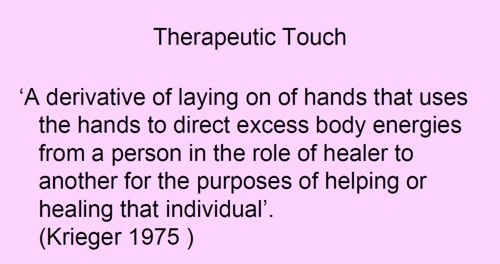
There are no "excess body energies". It’s made-up nonsense.
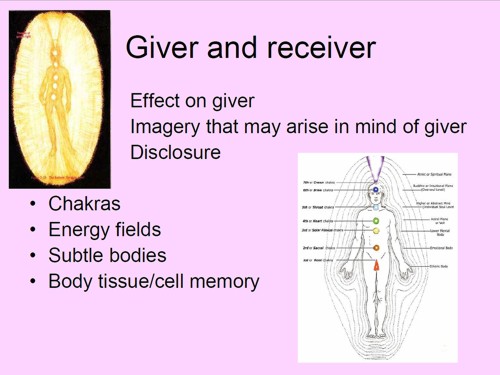
The diagram is pure imagination. It dates form a time before we knew anything about physiology, yet it is still being taught as though it meant something.
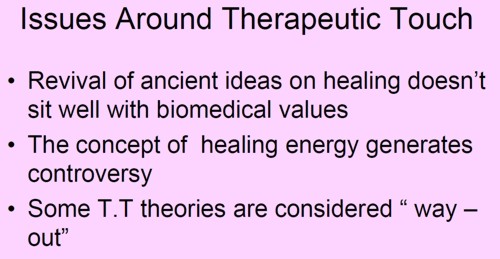
The admission that there is controversy is interesting. But it doesn’t seem to deter Napier’s teachers in the slightest.
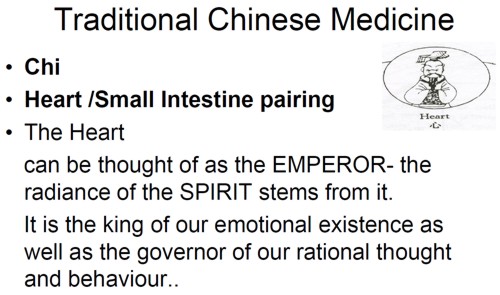
How can anyone in the 21st century believe that the heart is "king of our emotional existence”?. That’s just preposterous pre-scientific myth,

You must be joking.
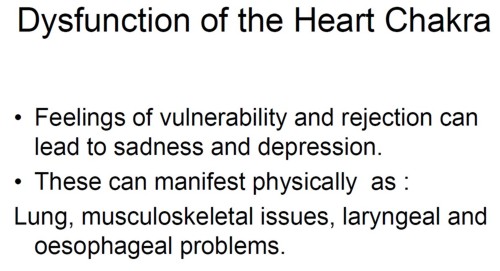
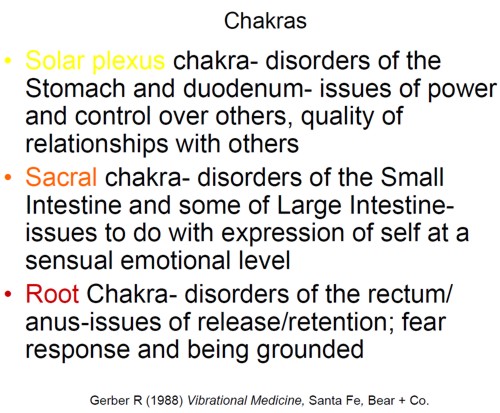
"Vibrational medicine" is a non-existent subject. Pure gobbledygook.
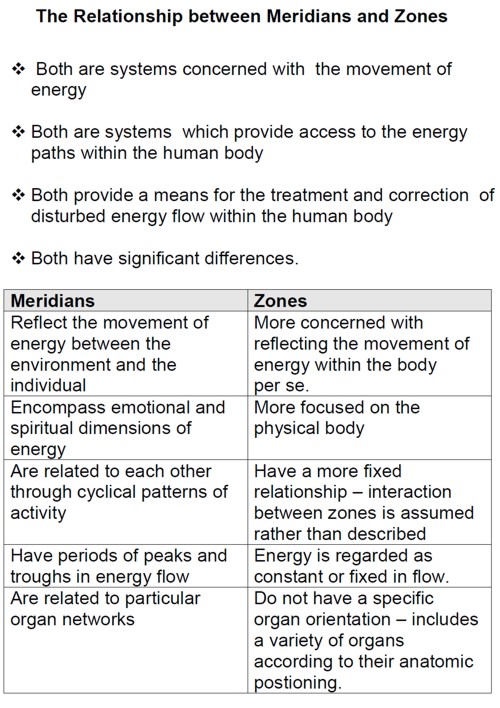

This is partly old, partly quite new. It is all preposterous made-up nonsense. There isn’t the slightest reason to think that "zones" or "meridians" exist. In fact there is good evidence from acupuncture studies to think that they don’t exist.
Now some slides from course CPT08102. The mention of the word ‘energy’ in the alternative world always rings alarm bells. Here’s why.

Well, it’s a good question. Pity about the answer.

Shouldn’t that read "as a practising reflexologist it is important than you have a MISunderstanding of the energy that surrounds us"?.

![]()
What logic? Have these people never heard of Hodgkin & Huxley (the answer, I imagine, is no)?
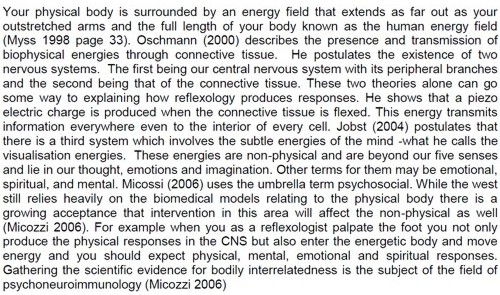
The mention of Kim Jobst immediately raises suspicions. He is a homeopath and endorser of the obviously fraudulent Q-link
pendant.
"when you as a reflexologist palpate the foot you not only produce the physical responses in the CNS but also enter the energetic body and move energy , , ". Well, no you don’t. This is purely made-up nonsense. The words sound "sciencey" but the meaning of the words is utterly obscure.
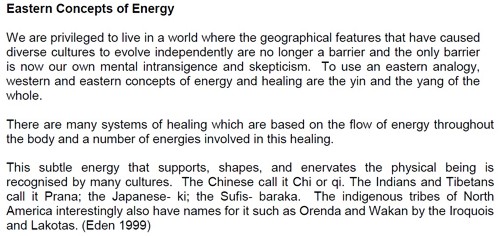
Yes we do live in an interconnected world. And sadly, that interconnectedness is used to spread myth and misinformation, usually with the aim of making money.
I guess Edinburgh Napier University makes money by teaching ancient myths as though they were true. In so doing they destroy their academic reputation.

Here you are tested to see how much nonsense you have memorised successfully. If only they had sent ‘model answers’.
Remember, these pre-scientific myths are not being taught as history or anthropology. They are taught as though they were true, to students who are then let loose on patients, so they can make money from anyone who is gullible enough to believe what they say.
A 2009 systematic review of randomised controlled trials concludes that “The best evidence available to date does not demonstrate convincingly that reflexology is an effective treatment for any medical condition.”. So forget it.
How about it Professor Stringer? Isn’t it time to clean up your university?
Follow-up
|
In 2009 I asked Napier University Edinburgh for details of what was taught on its herbal medicine "BSc" course. At first it was refused, but then (as often seems to happen when threatened with exposure) the course was closed, and Napier sent what I’d asked for without waiting for the judgement from the Scottish Information Commissioner, |

|
Some samples of the dangerous nonsense that used to be taught on Napier’s herbal medicine course (now closed) have been exposed in “Hot and cold herbal nonsense from Napier University Edinburgh: another course shuts“.
That sadly doesn’t mean that Napier has stopped teaching nonsense. It offers a 3 year Honours BA degree in "reflexology" (the only other place in UCAS is the University of Wales Institute, Cardiff (UWIC), which offers a “BSc(Hons)”, though nine other places offer foundation degrees or HND)
Napier also offers a BA (Hons) in Aromatherapy, according to UCAS
Clearly quackademia has not died entirely yet, though it is on its way. It has closed down entirely at the University of Salford and the University of Central Lancashire. And when I wrote about quackademia in Nature in 2007 there were five "BSc" degrees in homeopathy. Now UCAS does not list a single one. It has even vanished in the home of woo, the University of Westminster.
When I asked Napier for teaching materials used in reflexology and aromatherapy, the request was, as usual. refused. In a letter dated 20 August 2010, David Cloy, Head of Governance & Management Services, wrote that disclosure of the materials “. , would be substantially prejudicial to the Universitys [sic] commercial interests”.
Scotland has its own Freedom of Information (Scotland) Act, and its own Information Commissioner, so it wasn’t possible to rely on the win that I had with the Information Commission (England and Wales). An Appeal was duly lodged on September 3rd 2010. They were a lot faster than before and their decision, dated 9 December 2010, was again almost completely in my favour [download the whole decision]. The decision ended thus.
The Commissioner finds that Edinburgh Napier University (the University) failed to comply with Part 1 of the Freedom of Information (Scotland) Act 2002 (FOISA) in responding to the information request made by Professor Colquhoun. The University wrongly withheld information under section 33(1)(b) of FOISA, and thereby failed to comply with section 1(1) of FOISA. It also failed to provide Professor Colquhoun with notice that certain of the information he had requested was not held, as required by section 17(1) of FOISA. The University also failed to provide Professor Colquhoun with reasonable advice and assistance in relation to his information request, as required by section 15(1) of FOISA.
The Commissioner therefore requires the University to provide the withheld information, and the advice detailed in paragraph 16 of this decision notice, by 27 January 2011.
There is quite a lot of material, so I’ll restrict myself to a few quotations.
Therapeutic Touch
This makes an interesting example because it is so obviously fraudulent. It is particularly interesting because of a famous paper published in 1996, in the Journal of the American Medical Association (read the paper) by Emily Rosa aged 9. She devised a simple experiment that showed convincingly that healers could not do what they claimed. Nobody has ever detected the magic rays that are said to emanate from the hands of the ‘healer’/confidence trickster. It is all pure make-believe. Like so many things of its sort, there is no ancient wisdom involved. It was invented in 1977 by a nurse. Watch the video of the test on YouTube, or the less reverent version by Penn and Teller. Also worth reading is Why Therapeutic Touch Should Be Considered Quackery.
I was sent a set if slides that are used for teaching students at Edinburgh Napier University about "Therapeutic Touch" (part of course CPT08104 “Pathophysiology Insights to Practice”)..
When reading these, remember that this is not a course on cultural history, or a course about the pre-scientific beliefs of primitive tribes as in anthropology. It is taught to students to enable them to charge money to sick and desperate people.
|
Rogerian Perspectives on Therapeutic Touch
– seen as a knowledgeable and purposive patterning of patient-environment energy field process in which (the nurse) assumes a meditative form of awareness and uses her/his hands as a focus for the patterning of the mutual patient-environment energy field process”. Four Principal (Conceptual ) Building Blocks. Energy Fields. The fundamental unit of the living and the non living” (Rogers 1986).
Openness
|
|
Pattern – the distinguishing characteristic of the energy field. A very useful concept – it helps with understanding the uniqueness of the individual – human existence and movement of energy. Patterns of relating – responding
Pan-dimensionality – a non-linear domain without special / temporal attributes
|
|
Rogers model also has 3 cardinal principles. Three Principles of Homeodynamics:
Teilhardt de Chardin (Essay on Human Spirituality) A comparative Explanation of Rogers’ laws of Homeodynamics )
|
All of this is so many meaningless words. It has the vaguely sciencey sound beloved of quacks (and post-modernists), but it is a million miles from science.
Empirically it just doesn’t work.
Sadly the slides from Napier did not include any helpful illustrations, but these two, from a similar lecture given at the University of Westminster should make it all clear.


Aromatherapy
There’s some perfectly sensible stuff about the chemistry of essential oils. It’s when it comes to what they are good for that things rapidly come unstuck. Table 17 (extracted from a handout on essential oil chemistry) has all sorts of suggested uses
Energising
Essential oils can correct deficits or blockages in energy
Difficult to back up with scientific research, but nevertheless an important property in aromatherapy
Synergistic blending using the energetic approaches
So it is "important" but there is no evidence for it. The Table is prefaced by a disclaimer of sorts.
There is a body of anecdotal information concerning the potential therapeutic actions of essential oils, such as their anti-inflammatory, sedative and analgesic effects (Bowles 2003).
Despite some of the potential uses of essential oils contained in Table 17, it is not the role of the aromatherapist to treat specific conditions such as infections. However, the therapist can include appropriate oils in a holistic context, and can offer aromatherapy support preparations for home use.
At this point the handout does give quite strong hints that there is no good evidence that any of it works. In that case, why are they doing a three year degree in it?
Then of course we get on to the 19th century vitalism (being taught in the 21st century) and the usual ‘energy’ nonsense. For example
Holmes (1997) proposed that the nature of a fragrance can bring about specific psychotherapeutic effects. Using three fragrance parameters – tone (odour quality), intensity and note (evaporation rate), with tone being the most significant, and six fragrance categories – spicy, sweet, lemony, green, woody and rooty. He proposes that the nature of a fragrance will bring about specific psychotherapeutic effects. The following is a summary of his suggestions.
‘High/Top tone’ oils such as those from the citrus group, the Myrtaceae family and also ylang ylang extra and 1, lavender and mimosa abs. will have a stimulating, uplifting effect.
‘Low/Base tone’ oils including vetivert, patchouli, sandalwood and also tuberose, hay and oakmoss abs., will have a depressing, sedating effect.
Gabriel Mojay is quoted as saying
“Fragrance is the primary effective quality of essential oils. By this we mean their most immediate and generalised effect on the body and mind. This effect is first and foremost an energetic effect – as it is the vital energy of the human organism that first responds to an essential oil and its fragrance.”
These are just more empty words, woolly thoughts about long-discredited ideas of vitalism. They are presented entirely uncritically.
Reflexology
Reflexology is based on the utterly barmy proposition that "… reflexologists claim to be a system of zones and reflex areas that they say reflect an image of the body on the feet and hands, with the premise that such work effects a physical change to the body".
Regardless of its absurd premises, it just doesn’t work. A review by Ernst (2009) concludes
"The best evidence available to date does not demonstrate convincingly that reflexology is an effective treatment for any medical condition."
It is simply a foot massage, There’s nothing wrong with that, if you like that kind of thing, but please don’t pretend it is anything more
One handout lists, under the treatments for Migraines and Headaches
- Homeopathy (applying the principle of similimum)
- Herbal
- Massage for relaxation
- Reflexology (addressing reflexes relating to head, neck, solar plexus, spine, pituitary & digestive systems).
- Nutritional therapy
- Accupressure.[sic]
- Bach Flowers may be useful
No evidence is cited for any of them, not doubt because next-to-none exists.
A three year degree in rubbing feet is just an absurdity.
The material that was sent about reflexology was very thin. I’ve asked for more, but in a sense it doesn’t matter, because all one has to do is look at a standard reflexology diagram to see what a load of unmitigated nonsense it is. There isn’t the slightest reason to think that an area on your big toe is ‘connected’ in some unspecified sense, to you nose, It is just preposterous made-up junk.

Diagram from Scienceblogs
Who is responsible?
I’m quite happy to believe that the people who teach this new-age nonsense actually believe it.
|
What I would like to know is whether the Principal and Vice-Chancellor of Edinburgh Napier University believes it. She is Professor Dame Joan K. Stringer DBE, BA (Hons) CertEd PhD CCMI FRSA FRSE. That’s an impressive string of initials for somebody who seems to defend 19th century vitalism as a suitable subject for an honours degree. I could ask her, but such letters rarely get a response. |
Follow-up
Times Higher Education published today a version of an earlier post on this blog, Why should a postman pay for your university education?.
Although the submtted version was within length, it got shortened and, worse, a bit garbled in places. I got no chance to check the final version. The penultimate paragraph was not written by me. So here, for the record, is what I sent them.
|
.We hear a lot about lifelong education, and a good thing too. But we have a government that seems to think socially-useful learning does end at 18. This age is a watershed in official attitudes to education particularly in two areas, religious discrimination and education as a public good. In 1871 the Universities Tests Act made it illegal for a university to discriminate among applicants on the basis of religious beliefs (or lack thereof) and forced Oxford, Cambridge, and Durham to follow in the footsteps of UCL. For the last 140 years it has been unimaginable that any university would allow religious discrimination. In stark contrast, in 2010, religious discrimination (and the accompanying social discrimination) in entry to primary and secondary schools is not only legal, but is actively encouraged by the government. It was a trend that got worse while the ‘reverend’ Tony Blair was prime minister. The minister of education under the new conservative regime promised even more religious schools. Why the rules should be diametrically opposite when you are under 18 from when you are over 18 is baffling. It is equally baffling (and perhaps a partial explanation) that universities are not regarded as part of education at all by this government and its immediate predecessors. Universities are governed by the Department of Business, not the Department of Education. Education is not regarded as a continuum, or as a life-long project: it’s something you do at school. The government has managed the remarkable feat of devising a system for universities in which everybody loses. It saves the taxpayer little or no money (according to HEPI). It leaves universities worse off. And it does both of these while tripling the debt incurred by students. It’s hard to believe that such monumental ineptitude has motives that are other than ideological. The virtual privatisation of post-18 teaching, particularly of humanities, was a step too far even for Margaret Thatcher. The only too brief debate on these changes focussed almost entirely on how to repay an enormous debt. That was the wrong starting point. The first thing that should have been decided was what sort of university system we want. It is arguable that the honours degree system is quite unsuited to an age when half the population get higher education. A general first degree, at a teaching-only institution, would be much cheaper, and it would be a social leveller. If that were followed, for those who wanted and merited it, by a properly taught graduate school (as opposed to the present powerpoint-teaching charades), and this was taught by active researchers at research intensive places, the standard of education would be increased. There might be some problems with such a system, but they were not even discussed before rushing the changes through. The organisation that should have been at the forefront of fresh thinking, UUK, was paralysed as the elite VCs, all in favour of maximum fees, wrangled with the post-1992 VCs who saw themselves at greater risk. The result was total inaction. They may have been on leadership courses, but they failed to lead. The elite VCs are now finding that even £9000 will leave them worse off than before. They really should have thought a bit more about how to adapt to tertiary education for half the population rather than trying to fund things as they are at the moment. Whatever the system, the question will always arise: why should a postman pay for your university education? My answer is that they should pay, but not very much. They should pay because, although they may not get any direct benefit themselves, their children certainly may. The fairest, most progressive, tax is income tax. If you are a postman, or indeed a graduate, on a low income, you shouldn’t pay much tax, so you won’t pay much for other people’s university education. I can see no reason for the sudden change in attitude to, and funding of, education that happens when you reach 18. I see every reason why kids should be angry. I doubt that we have seen the last of the riots. I hope not anyway. |
Follow-up
|
One of my greatest scientific heros is A.V.Hill, and its one of my great regrets that I saw him only in the distance. He’s a hero partly because of his science, but also because of his other interests, in particular his efforts to help scientists escape from pre-war Germany. Read the Biographical Memoir of Hill, written by Bernard Katz [download pdf], and comments in my obituary for Katz.
A.V. Hill, c. 1935 (drawn by Edward Halliday in 1978, from a photograph) |
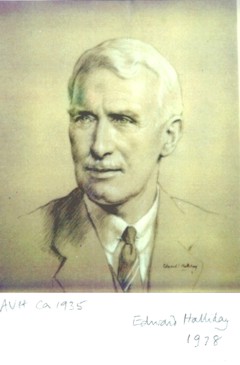 |
There are some amazing pictures from Hill’s photo album here. And you can read an account of a visit to the lab on Boxing Day 1960 written by AV’s grandson, Nicholas Humphrey (his father, John Humphrey, was external examiner of my PhD). And Tom Chivers, who writes a rather good column in the Telegraph is Alison Hill’s son, and so he’s the great grandson of AV. In yet another irrelevant coincidence, I lived for a year in a Max Planck Institute house that had previously been occupied by Otto Meyerhof who, in 1922, got the Nobel prize jointly with AV Hill.
Some of the scientific background is given by Austin Elliott, as I did in The quantitative analysis of drug–receptor interactions: a short history.
This post was prompted not so much by the science as by the curious conjunction of the New Year’s Honours List, and a discovery from Twitter. Hill won the Nobel prize for Physiology or Medicine in 1922, but refused the customary knighthood or peerage that gets offered on such occasions. Dr Alison Hill, AV’s granddaughter, mentioned on Twitter that Hill loved quoting a verse by A.A. Milne (author of Winnie the Pooh) that I had never heard before. It appears to come from a book, The Sunny Side, that Milne publshed in 1921. It’s worth quoting in full.
|
O.B.E. I know a Captain of Industry, I know a Lady of Pedigree, I know a fellow of twenty-three, I had a friend; a friend, and he |
This also led to the unexpected discovery that A.A. Milne, like A.V. Hill, had done a mathematics degree at Trinity College Cambridge before moving on to teddy bears.
Wikepedia gives a list of the alternative roll of honour, those who have declined an honour.
The list of honours in Higher Education contains the usual administrators and vice-chancellors. It contains next to no scientists. I can’t say i find it very inspiring. The main effect of the honours system seems to be to keep people from rocking the boat until the day they die.
One is once again reminded of the definition from A Sceptic’s Medical Dictionary (BMJ publishing, 1997). by Michael O’Donnell.
Knight starvation
“Affective disorder that afflicts senior doctors . . . A progressive condition that deteriorates with the publication of each Honours List and, in longstanding cases, can produce serious erosion of judgement and integrity.”
Here’s a 1932 picture with several scientific heros. Hill is in the centre, with A.J. Clark on his left and Verney on his right, J.H.Gaddum is on the left end of the back row (all holders of the UCL chair in Pharmacology). .
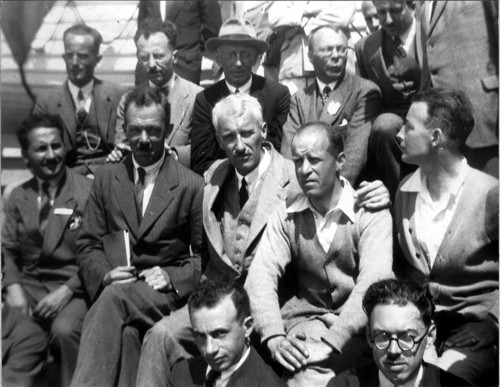
Taken from K J Franklin’s History of the International Physiological Congress – it is a photo taken on the SS Minnekhda, charted by European physiologists to attend the 1932 Boston congress. [Dr Tilli Tansey, FMedSci., Hon FRCP.,Historian of Modern Medical Sciences Wellcome Trust Centre for the History of Medicine, UCL
Follow-up
Here are two more documents that are relevant to the life of A.V. Hill.
Gerta Vrbová (born 1926, in Slovakia) wrote "Archibald V. Hill’s contribution to science and society" [download pdf]. She herself lived through the holocaust. The story of her escape to England is like an adventure novel. She became a professor at UCL where I met her many times.
" as an academic she was able to gain permission to travel between the Soviet states of Eastern Europe, and on a visit to a conference in Poland in 1958, she decided to make her escape. Travelling on foot across the mountains back to Czechoslovakia, she collected her children aged four and six, crossed the Polish Czechoslovak border with them and took a train to Warsaw. Having unofficially entered the names of children on her passport, she was able to obtain a transit visa for Copenhagen, from where, after a year, she was able finally to come to England." [from UCL news]

Gerta Vrbová in 2014, and with husband, Rudolf Vrba, in Bratislava after the war [picture from Daily Mirror]
There is another interview with Vrbová in the Physiological Society’s Oral History series.
A.V. Hill and alphabetical order of authors
In the first 50 years of its existence, the Journal of Physiology allowed authors to choose the order in which authors appeared, But for 60 years, from the 1930s to the 1990s, the journal insisted that authors’ names be listed in alphabetical order. That, for example, is why our 1985 paper is listed as Colquhoun & Sakmann. A.V.Hill was one of the people who proposed this system and a history of it has appeared recently [download pdf]. Personally, I liked this system. though having a name that begins the "C", I couldn’t be very active in advocating it. The alphabetical system worked well when authors did experiments themselves, and most papers had 1 – 3 authors. Nobody judges contributions based on author order for Hodgkin & Huxley, or for Katz & Miledi. In the 1990s, alphabetical order was abandoned. Too few other journals used that system, and it could not survive the era of guest authors that has accompanied the publish-or-perish regime imposed on academics by managers.
2 February 2017
A.V. Hill is one of my scientific heroes, because of his science, his humanity, his running (and because he turned down a knighthood after he got the Nobel Prize in 1922 -see above.
Hilda Bastian has written a timely article about him:The same folly,the same fury. It was posted shortly after Holocaust Memorial Day (27 January), the day on which Donald Trump chose to exclude from the USA all the refugees who are fleeing from the war in Syria.
AV Hill played a central role in helping German scientists escape from the Nazis -to the enormous benefit of UK science. He spoke from the same stage as Mussolini.
He said
“Freedom itself is again at stake… It is difficult to believe in progress, at least in decency and commonsense, when this can happen almost in a night in a previously civilised State… [W]e must ensure that the same folly, the same fury, does not occur elsewhere.” A.V. Hill (Nature, 1933).
The post doesn’t mention Trump, Farage or May. It doesn’t need to.
We hear a lot about lifelong education, and a good thing too. But we have a government that seems to think life ends at 18. The contrast between official attitudes to schools and post-school education is striking. The contrast is most striking in two areas: religious discrimination and public support for costs.
Religous discriminatiion and selection
The Universities Tests Act was passed on 18 June 1871, while William Gladstone (Liberal) was Prime minister. It was "An Act to alter the law respecting Religious Tests in the Universities of Oxford, Cambridge, and Durham, and in the Halls and Colleges of those Universities". Of course UCL was founded in 1826, partly as a place that was free of religious discrimination. Since 1871 it has been illegal for a university to discriminate among applicants on the basis of their religious beliefs or lack of them. For the last 140 years it has been unimaginable that anyone would try to do such a thing.
In stark contrast, in 2010, religious discrimination among entrance to primary and secondary schools is not only legal, but is actively encouraged by the government. It was a trend that got worse while the ‘reverend’ Tony Blair (illiberal) was prime minister. The minister of education under the new conservative regime promised even more religious schools.
Why the rules should be diametrically opposite when you are younger than 18 from when you are over 18 is baffling.
It is equally baffling (and perhaps a partial explanation) that universities are not regarded by this government, or by Blair’s, as part of education at all. They are governed by the Department of Business, not the Department of Education.
Why should a postman pay for your university education?
I imagine that I’m not the only person who has wrestled with this question in the last few weeks (Stephen Law’s thoughts here)
In the UK it is a legal requirement to stay in full time education until the age of 16, and that should be increased to 18 by 2015. Although most children stay in school until 18, around 25% or 30% don’t. I have never heard anybody question the idea that education from 16 to 18 should not be supported 100 percent by the state, out of general taxation. That is the case despite the fact that not everybody stays in education up to 18.
Education up to the age of 18 is regarded as a common good and nobody questions for a moment that it should be free at the point of use.
Once again, everything changes entirely when you reach 18. Education is not regarded as a continuum, or as a life-long project. Suddenly at the age of 18, it stops being a public good worthy of state support, and becomes an optional extra for those who are rich, or those who are not deterred by the idea of going though life paying a debt that will, in some cases, approach the size of the mortgage on their house.
The ConDem coalition, on December 9th 2010, has come very close to privatising the teaching of humanities in universities. You are encouraged to learn languages from 16 – 18 and then these are dropped like a hot cake.
The result has been riots by schoolchildren and total discrediting of Liberal democrats who voted for one of the most philistine measures in living memory.
The discussion of this legislation has, in my view, focussed on the wrong thing. It has been almost entirely about the mechanisms for paying off an enormous debt. That was the wrong place to start. This is what should have been done.
(1) Consider what is being funded. Should the university system adapt to present circumstances, e.g by abolishing honours degrees and creating real graduate schools, as I suggested recently in the Times? Disgracefully, the government has rushed headlong into changes in funding without waiting to consider what it should be funding. Equally disgracefuly, Universities UK (the vice-chancellors’ trade union) has made no constructive suggestions for change, but appears to be rendered immobile by a rift between the Russell group VCs who want to grab as much as they can as soon as possible, and other VCs who fear for their existence.
(2) After deciding what form universities should have in the future, you can then go on to discuss how much public money should be used to support the system.
(3) Only after both of these have been done, does it make sense to talk about how you pay back any contribution made by the student (and that contribution should be, at most, no bigger than now).
In their haste to make people pay high fees, the government seems to have got the worst of both worlds. They have devised a scheme that, in the long run, is likely to cost the taxpayer as much as, or even more than, the present system, while at the same time trebling fees to students. It’s hard to imagine greater incompetence than that.
But the question still lurks: why should a postman pay for your university education? My answer is yes, but not much. They should pay because, although they may not get any direct benefit themselves, their children certainly may. The fairest, most progressive, tax is income tax. If you are a postman, or indeed a graduate, on a low income you shouldn’t pay much tax, so you won’t pay much for, inter alia, other people’s university education.
I can see no reason for the sudden change in attitude to, and funding of, education that happens when you reach 18.
I see every reason why kids should be angry. I doubt that we have seen the last of the riots.
I hope not anyway.
Follow-up
See also UCL’s Beautiful Occupation. Students seem to think more clearly about what’s happening than either university management or the government.
December 10 2010, The New York Times points out that tuition fees in the UK will, under this scheme, be double those of public universities in the USA."this new policy is an utter failure."
December 11 2010. An NHS doctor writes
"I was slightly dissapointed when 7/8 of my first year medical students showed up for their last day of teaching at my practice on thursday December 9th. The eighth student was ill, so not one of them was protesting. When I asked them why not they said that in their first week as medical students they were told not to get involved in any protests because even a police caution would mean they might be thrown off the course and almost certainly they wouldn’t get a job. Images of Fascist Spain or Nazi Germany came immediately to mind (I have just read Alone in Berlin)"
December 11 2010. The Guardian reports:
Liberal Democrat grassroots hit back over tuition fees
Richard Grayson, former director of policy, says Liberal Democrats should move closer to Ed Miliband and Labour
That sounds better.
December 12 2010. The Observer reports:
“Police officers ‘tried to stop hospital staff treating injured protester’ Mother of injured student Alfie Meadows said that her son’s life could have been put at risk by the journey to another hospital”.
Research quangos lead to mediocrity is the headline title of a letter to The Times appeared on 6 December 2010. It is reproduced below for those who can’t (or won’t) pay Rupert Murdoch to see it.
The letter is about the current buzzword, "research impact", a term that trips off the lips of every administrator and politician daily. Since much research is funded by the taxpayer, it seems reasonable to ask if it gives value for money. The best answer can be found in St Paul’s cathedral.
The plaque for Christopher Wren bears the epitaph
LECTOR, SI MONUMENTUM REQUIRIS, CIRCUMSPICE.
Reader, if you seek his memorial – look around you.
Much the same could be said for the impact of any science. Look at your refrigerator, your mobile phone, your computer, your central heating boiler, your house. Look at the X-ray machine and MRI machines in your hospital. Look at the aircraft that takes you on holiday. Look at your DVD player and laser surgery. Look, even, at the way you can turn a switch and light your room. Look at almost anything that you take for granted in your everyday life, They are all products of science; products, eventually, of the enlightenment.
BUT remember also that these wonderful products did not appear overnight. They evolved slowly over many decades or even centuries, and they evolved from work that, at the time, appeared to be mere idle curiosity. Electricity lies at the heart of everyday life. It took almost 200 years to get from Michael Faraday’s coils to your mobile phone. At the time, Faraday’s work seemed to politicians to be useless. Michael Faraday was made a fellow of the Royal Society in 1824.
. . . after Faraday was made a fellow of the Royal Society[,] the prime minister of the day asked what good this invention could be, and Faraday answered: “Why, Prime Minister, someday you can tax it.”
Whether this was really said is doubtful, but that hardly matters. It is the sort of remark made by politicians every day.
In May 2008, I read a review of ”The myths of Innovation” by Scott Berkun. The review seems to have vanished from the web, but I noted it in diary. These words should be framed on the wall of every politician and administrator. Here are some quotations.
“One myth that will disappoint most businesses is the idea that innovation can be managed. Actually, Berkun calls this one ‘Your boss knows more about innovation than you’. After all, he says, many people get their best ideas while they’re wandering in their bathrobes, filled coffee mug in hand, from the kitchen to their home PC on a day off rather than sitting in a cubicle in a suit during working hours. But professional managers can’t help it: their job is to control every variable as much as possible, and that includes innovation.”
“Creation is sloppy; discovery is messy; exploration is dangerous. What’s a manager to do?
The answer in general is to encourage curiosity and accept failure. Lots of failure.”
I commented at the time "What a pity that university managers are so far behind those of modern businesses. They seem to be totally incapable of understanding these simple truths. That is what happens when power is removed from people who know about research and put into the hands of lawyers, HR people, MBAs and failed researchers."
That is even more true two years later. The people who actually do research have been progressively disempowered. We are run by men in dark suits who mistake meetings for work. You have only to look at history to see that great discoveries arise from the curiosity of creative people, and that,. rarely, these ideas turn out to be of huge economic importance, many decades later.
The research impact plan, has been now renamed "Pathways to Impact". It means that scientists are being asked to explain the economic impact of their research before they have even got any results.
|
All that shows is how science is being run by dimwits who simply don’t understand how science works. This amounts to nothing less than being compelled to lie if you want any research funding. And, worse stiil, the pressure to lie comes not primarily from government, but from that curious breed of ex-scientists, failed scientists and non-scientists who control the Research Councils. |
 How much did RCUK pay for the silly logo? |
We are being run by people who would have told Michael Faraday to stop messing about with wires and coils and to do something really useful, like inventing better leather washers for steam pumps.
Welcome to the third division. Brought to you be Research Counclls and politicians.
Here is the letter in The Times. It is worded slightly more diplomatically than my commentary. but will, no doubt, have just as little effect. What would the signatories know about science? Several off them don’t even wear black suits.
|
Sir, The governance of UK academic research today is delegated to a quangocracy comprising 11 funding and research councils, and to an additional body – Research Councils UK. Ill considered changes over the past few decades have transformed what was arguably the world’s most creative academic sector into one often described nowadays as merely competitive. In their latest change, research councils introduce a new criterion for judging proposals – “Pathways to Impact” – against which individual researchers applying for funds must identify who might benefit from their proposed research and how they might benefit. Furthermore, the funding councils are planning to begin judging researchers’ departments in 2014 on the actual benefits achieved and to adjust their funding accordingly, thereby increasing pressure on researchers to deliver short-term benefits. However, we cannot understand why the quangocracy has ignored abundant evidence showing that the outcomes of high-quality research are impossible to predict. We are mindful of the need to justify investment in academic research, but “Pathways to Impact” focuses on the predictable, leads to mediocrity, and reduces returns to the taxpayer. In our opinion as experienced researchers, few if any of the 20th century’s great discoveries and their huge economic stimuli could have happened if a policy of focussing on attractive short-term benefits had applied because great discoveries are always unpredicted. We therefore have an acutely serious problem. Abolishing “Pathways to Impact” would not only save the expense of its burgeoning bureaucracy; it would also be a step towards liberating creativity and indicate that policy-makers have at last regained their capacity for world-class thinking. Donald W Braben John F Allen, Queen Mary, University of London; Adam Curtis, Glasgow University; Peter Lawrence FRS, University of Cambridge; David Ray, BioAstral Limited; Lewis Wolpert FRS, University College London; |
Now cheer yourself up by reading Captain Cook’s Grant Application.
Follow-up
Scientists should sign the petition to help humanities too. See the Humanities and Social Sciences Matter web site.
Nobel view. 1. Andre Geim’s speech at Nobel banquet, 2010
"Human progress has always been driven by a sense of adventure and unconventional thinking. But amidst calls for “bread and circuses”, these virtues are often forgotten for the sake of cautiousness and political correctness that now rule the world. And we sink deeper and deeper from democracy into a state of mediocrity and even idiocracy. If you need an example, look no further than at research funding by the European Commission."
Nobel view. 2. Ahmed Zewail won the 1999 Nobel Prize in Chemistry. He serves on Barack Obama’s Council of Advisors on Science and Technology. He wrote in Nature
“Beware the urge to direct research too closely, says Nobel laureate Ahmed Zewail. History teaches us the value of free scientific inquisitiveness.”
“I have emphasized that without solid investment in science education and a fundamental science base, nations will not acquire the ground-breaking knowledge required to make discoveries and innovations that will shape their future.”
“Preserving knowledge is easy. Transferring knowledge is also easy. But making new knowledge is neither easy nor profitable in the short term. Fundamental research proves profitable in the long run, and, as importantly, it is a force that enriches the culture of any society with reason and basic truth.”
How many more people have to say this before the Research Councils take some notice?
One problem with the Browne report is that it didn’t consider the whole picture. It looked only at how to fund universities as they are now, and concluded that arts and humanities weren’t worth funding at all. What it failed to do (and to be fair, it wasn’t asked to do) was think what universities should be like. Perhaps that is just as well, given Browne’s views, but it means that the job is only half done.
I have argued that the present system, which was essentially dictated by John Major’s conservative government, is simply not working for an age when 45 percent of kids go into higher education. It makes no sense to decide on a funding mechanism before deciding what sort of university system we want.
Michael Collins is a lecturer in 20th Century history at UCL. On November 23rd he wrote a very interesting piece on the OpenDemocracy web site, Universities need reform – but the market is not the answer. He said
“As students begin a wave of occupations in university campuses across the UK, Michael Collins argues that academics should stand united in determined opposition to government cuts, but at the same time make a positive contribution to thinking about how the existing system of teaching and research can be reformed and restructured.”
His suggestions have much in common with mine, though mine were a bit more specific. I wrote about some concrete proposals in the Times Thunderer column. This is available without pay wall on this blog. (this was on October 11th, before the Browne report was published). .I immediately contacted Collins and we met on 25 November and the same day he published, again on OpenDemocracy, We need a Public Commission of Enquiry on the future of higher education. That was distilled into a letter and I spent most of the next day trying to get some support from scientists. A Saturday close to Christmas isn’t the best time to get responses to emails, but the result was satisfactory nonetheless.
On Monday 29th November the letter appeared in the Daily Telegraph
|
We need a Public Commission of Enquiry on the future of higher education It is clear from the scale of last week’s largely peaceful demonstrations across Britain that there is an enormous amount of concern amongst young people over the future of higher education. They are not alone. A wide range of commentators, politicians, public figures and academics have expressed closely argued reservations about the government’s attempt to rush through changes, the far-reaching consequences of which are so uncertain and potentially so damaging. Within universities there is considerable unease about what reforms based on the Browne report will mean. How might a ‘supply and demand’ model for arts and humanities funding function in practice? Education and research institutions cannot be set up, shut down and restarted according to market demand. With so much uncertainty about future employment prospects and economic conditions, student numbers will ebb and flow. Higher education needs greater stability. The Higher Education Policy Institute (HEPI) a respected independent think tank has pointed out that the government’s proposals for higher education funding “will increase public expenditure through this parliament and into the next”. The income stream from repayments which is supposed to form the long term basis for funding will not come back to the treasury for many years to come. This weakens the argument that planned changes to higher education funding are necessarily concurrent with a deficit reduction strategy in this parliament. The pledges on university tuition fees made at the 2010 general election mean the mandate for change is weak. We therefore do not believe that present circumstances are propitious for far reaching reforms. Instead, we propose the government set up a Public Commission of Enquiry, which should include wide consultations with politicians, academics, students, business leaders and others to examine the function and funding of higher education from first principles. Such an approach would be more likely to produce the consensus required to make reform deliverable and place the future of UK higher education on a sustainable footing. Sir Harold Kroto KCB FRS, Emeritus Professor of Chemistry, University of Sussex (Nobel Prize 1996) Sir Christopher Bayly FBA FRSL, Vere Harmsworth Professor of Imperial History, University of Cambridge Hermione Lee CBE FBA FRSL, Goldsmith’s Professor of English Literature, University of Oxford (1998-2008) John Dainton FRSA FRS, Sir James Chadwick Professor of Physics, University of Liverpool Christopher Pelling FBA, Regius Professor of Greek, University of Oxford Quentin Skinner FBA, Barber Beaumont Professor of the Humanities, University of London Linda Colley FBA, Shelby M.C. Davis 1958 Professor of History, Princeton University Jonathan Tennyson FRS, Massey Professor of Physics, University College London Christopher Wickham FBA, Chair of the Faculty of History, University of Oxford Richard Carwardine FBA, Rhodes Professor of American History, University of Oxford (2002-2009) Mary Beard FBA, Professor of Classics, University of Cambridge Steve Jones, Professor of Genetics, University College London Stefan Collini FBA, Professor of English Literature, University of Cambridge David Colquhoun FRS, Professor of Pharmacology, University College London Robert Gildea FBA, Professor of Modern History, University of Oxford J. N. Adams FBA, Emeritus Fellow, All Souls College, University of Oxford |
The letter in the Telegraph was accompanied by a front page story (despite competition from Wikileaks and the snow).

For a Tory newspaper, it was surprisingly sympathetic.
Meanwhile, the student occupations continue. More of that in the next post.
Follow-up
The mainstream media eventually catch up with bloggers. BBC1 TV (Wales) produced an excellent TV programme that exposed the enormous degree validation scam run by the University of Wales. It also exposed the uselessness of the Quality Assurance Agency (QAA). Both these things have been written about repeatedly here for some years. It was good to see them getting wider publicity.
Watch the video of the programme (Part 1, and Part 2) "Week In Week Out – University Challenged." “The programme examines how pop stars and evangelical Christians are running colleges offering courses validated by the University of Wales.” (I make a brief appearance, talking about validation of degrees in Chinese Medicine).
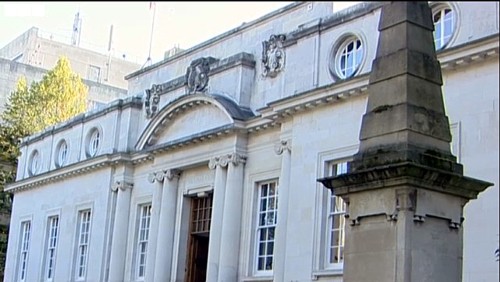
In October 2008 I posted Another worthless validation: the University of Wales and nutritional therapy. With the help of the Freedom of Information Act, it was possible to reveal the mind-boggling incompetence of the validation process used by the University of Wales.
McTimoney College of Chiropractic
The Chiropractic “degrees” from the McTimoney College of Chiropractic are also validated by the University of Wales by an equally incompetent, or perhaps I should say bogus, procedure. More details can be found at The McTimoney Chiropractic Association would seem to believe that chiropractic is “bogus”, and in a later post, Not much Freedom of Information at University of Wales, University of Kingston, Robert Gordon University or Napier University.
Andy Lewis has also written about chiropractic in The University of Wales is Responsible for Enabling Bogus* Chiropractic Claims to be Made.
Sadly the BBC programme did not have much to say about these domestic courses, but otherwise it was excoriating. In particular it had extensive interviews with Nigel Palastanga, whose astonishing admission that courses were validated withour seeing what was taught on them was revealed here two years ago. After that revelation, the vice-chancellor of UoW, Marc Clement BSc PhD CEng CPhys FIET FInstP, promoted Palastanga to be pro-vice-chancellor in charge of Learning, Teaching and Enhancement (I know, you couldn’t make it up).
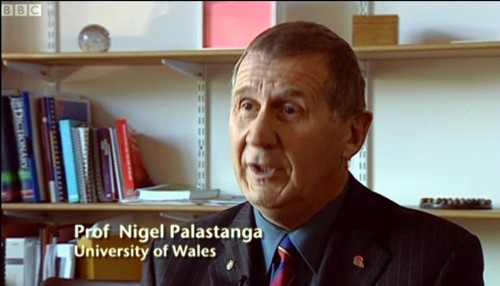
In the documentary Palastanga said
"It’s a major business. We earn a considerable amount of money."
That was obvious two years ago, but it’s good to hear it from the horse’s mouth.
After a section that revealed a bit about what goes on at two very fundamentalist bible colleges which gave University of Wales degrees, A. C. Grayling commented thus.
"They are there to train advocates for the biblical message and that is absolutely not, by a very very long chalk, what a university should be doing.. . . A respectable British Higher education institution like the University of Wales shouldn’t be touching them with a bargepole."
Undaunted, Palastanga responded
“That’s his opinion. I would say they are validated to the highest standards. They match what are called QAA benchmark. We have serious academics looking at them, and their academic standards are established at the very highest level.”
And if you believe that, you will truly believe anything.
You can download here one of many moderator’s reports obtained under the Freedom of Information Act. This one is for the BSc (Hons) Chiropractic. It is entirely typical of theuncritical boxticking approach to validation, Nowhere does it say "subluxation is nonsense", though even the GCC now admit that.
Traditional Chinese Medicine
The University of Wales validates several courses in what almost everyone but them classifies as quackery. As well as chiropractic and “nutritional therapy”, there is herbalism. For example a course at a college in Barcelona issues University of Wales degrees in Traditional Chinese medicine, a subject that is a menace to public health.. I was asked to comment on the course, and on a bag of herbs that the presenter had been sold to treat depression.
|
Radix Bupleuri Chinensis
Radix Angelicae Sinensis Radix Paeoniae Lactiflorae Rhizoma Atractylodis Macrocephalae Sclerotium Poriae Cocos Radix Glycyrrhizae Uralensis Cortex Moutan Radicis (Paeonia Suffruticosa) Fructus Gardeniae Jasminoidis Herba Menthae Haplocalycis Zingiber officinale rhizome-fresh |
 Ingredients of a custom mixture. |
There is no good evidence that any of the ingredients help depression, in fact next to nothing is known about most of them, apart from liquorice and ginger. Swallowing them would be rather reckless. They fall right into the description of any herbal medicine, in the Patients’ Guide, "Herbal medicine: giving patients an unknown dose of an ill-defined drug, of unknown effectiveness and unknown safety. "
Of the degrees, I said
"There’s no evidence that it [the herbs] does you any good. It may be dangerous because you have no idea of the dose. Degrees in Chinese Medicine consist of three years spent memorising myths and pre-scientific, er, untruths. That isn’t a degree, it’s a travesty."
Palastanga. responded
"We’ve had long debates in the Health Committee about where we would draw the line about what we validate. They have to demonstrate to us that there is some scientific basis for the practice, that there is an established curriculum, that there is an established safe practice."
The presenter asked him "So you are confident that Chinese medicine works? Palastanga replied
" I didn’t say that. I said that there is evidence that it does work . . We are trying to enforce these professions to undertake effective research."
That statement is simply not true, as shown by the response of the validation committee to the application for validation of the course in “Nutritional Therapy” at the Northern College of Acupuncture, documented previously. The fact of the matter is that the validation proceeded without looking at what was actually taught, and without even a detailed timetable of lectures. The committee looked only at the official documents presented to it and was totally negligent in failing to discover some of the bizarre beliefs of the people who were giving the course.
Palastanga went on to raise the usual straw man argument, about how little regular medicine is based on good evidence (though admittedly that is certainly true in his own field -he is a physiotherapist).
Fazley International College Kuala Lumpur
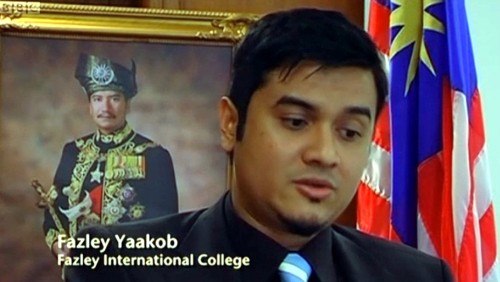
This business college in Kuala Lumpur offered University of Wales degrees. Its 32-year old president is a part time pop star with impressive looking qualifications
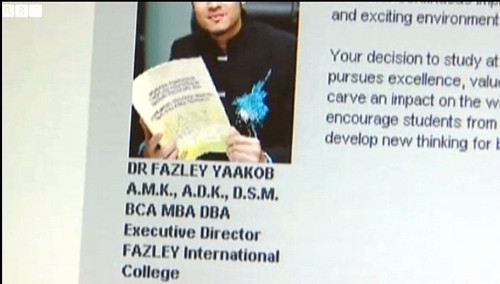
The presenter pointed out that
" His doctorate and his MBA were awarded in that citadel of education, Cambridge. Here he is, pictured at the city’s prestigious business school. He was there for all of four days and walked away with a doctorate. But the degree was not from the University of Cambridge, but from the now defunct "European Business School Cambridge". It never had the right to award degrees."
Neither the University of Wales nor the QAA had noticed this unfortunate fact. Once the TV team had done their job for them, the UoW withdrew support. though, as of 15 November 2010, that is not obvious from Fazley’s web site.
Mr (not Dr) Fazley seemed rather pleased about how students were attracted by the connection with the Prince of Wales. The fact that he is Chancellor of the University of Wales seems not inappropriate, given the amount of quackery they promote.
Quality Assurance Agency (QAA)
In 2007, I wrote, in Nature (see also here),
“Why don’t regulators prevent BSc degrees in anti-science? The Quality Assurance Agency for Higher Education (QAA) claims that “We safeguard and help to improve the academic standards and quality of higher education in the UK.” It costs taxpayers £11.5 million (US$22 million) annually. It is, of course, not unreasonable that governments should ask whether universities are doing a good job. But why has the QAA not noticed that some universities are awarding BSc degrees in subjects that are not, actually, science? The QAA report on the University of Westminster courses awards a perfect score for ‘curriculum design, content and organization,’ despite this content consisting largely of what I consider to be early-nineteenth-century myths, not science. It happens because the QAA judges courses only against the aims set by those who run the QAA, and if their aims are to propagate magic as science, that’s fine.”
That was illustrated perfectly in the documentary when Dr Stephen Jackson of the QAA appeared to try to justify the fact that the QAA had, like the University of Wales, failed entirely to spot any of the obvious problems. He had a nice dark suit, tie and poppy, but couldn’t disguise the fact that the QAA had given high ratings to some very dubious courses.
The QAA sent nine people to the other side of the globe, at a cost of £91,000. They could have done a lot better if they’d spent 10 minutes with Google at home.
Universities UK (UUK)
Needless to say, the Committee of Vice-Chancellors and Principals has said nothing at all. As usual, Laurie Taylor had it all worked out in Times Higher Education (4th November).
Speaking to our reporter Keith Ponting (30), he commended UUK’s decision to say absolutely nothing whatsoever about the abolition of all public funding for the arts and humanities.
He also praised UUK’s total silence on Lord Browne’s view that student courses should primarily be evaluated by their employment returns.
When pressed by Ponting for his overall view of UUK’s failure to respond in any way at all to any aspect of the Browne Review, he described it as “welcome evidence, in a world of change, of UUK’s consistent commitment over the years to ineffectual passivity”.
Meanwhile, a University of Wales video on YouTube
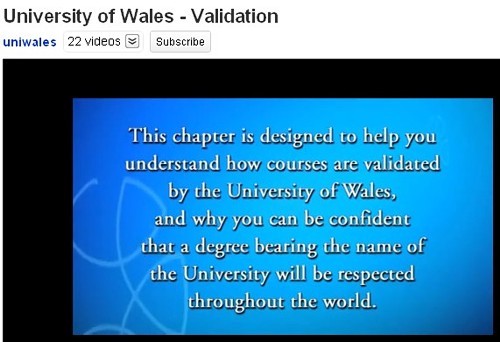
Caveat emptor
Follow-up
A couple of days later, a search of Google news for the “University of Wales” shows plenty of fallout. The vice-chancellor claims that ““The Minister’s attack came as a complete and total surprise to me”. That can’t be true. It is over two years since I told him what was going on, and if he was unaware of it, that is dereliction of duty. It is not the TV programme that brought the University into disrepute, it was the vice-chancellor.

